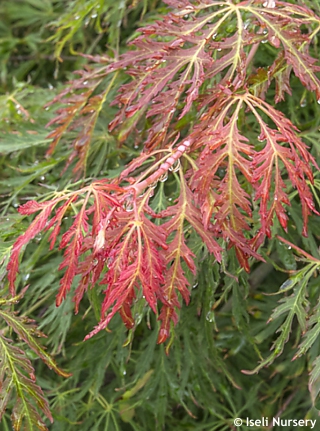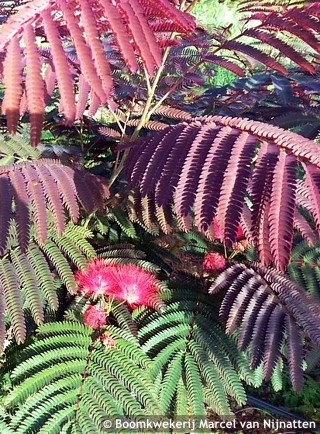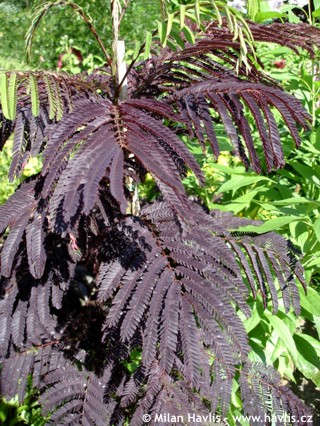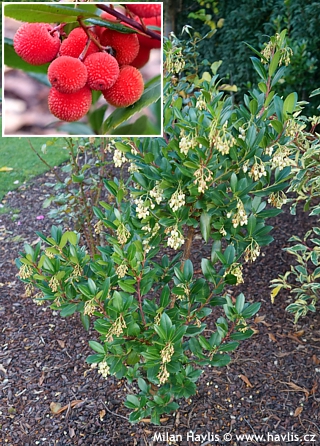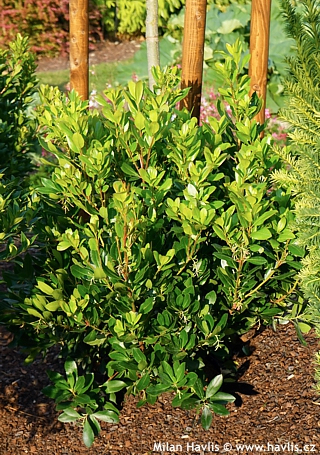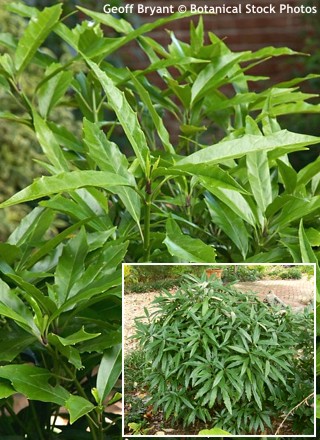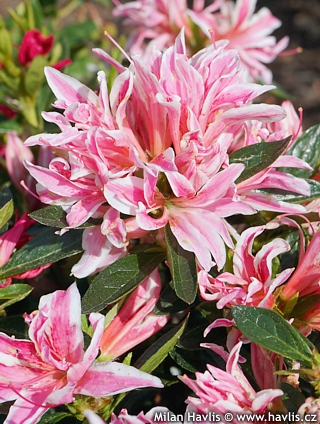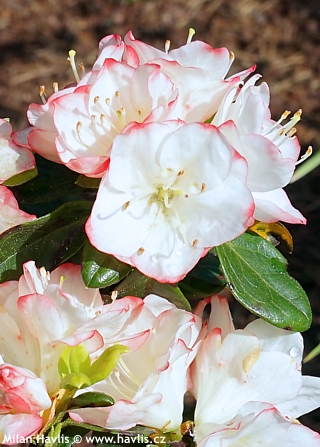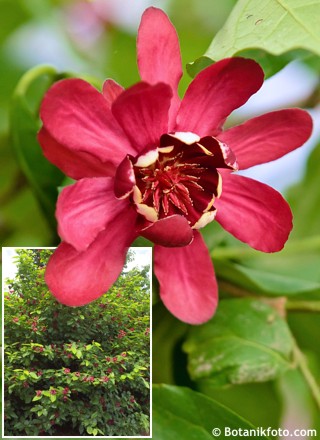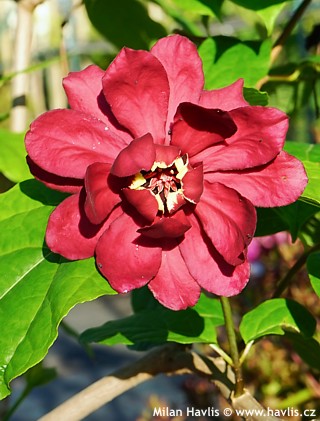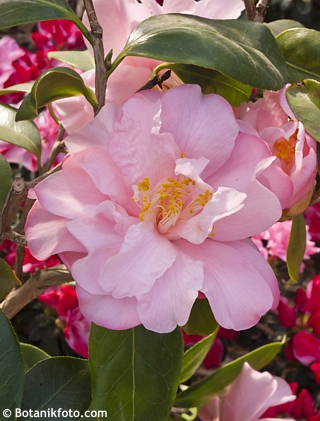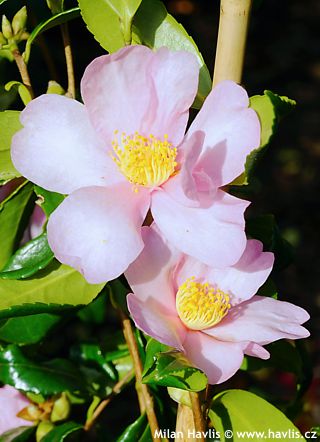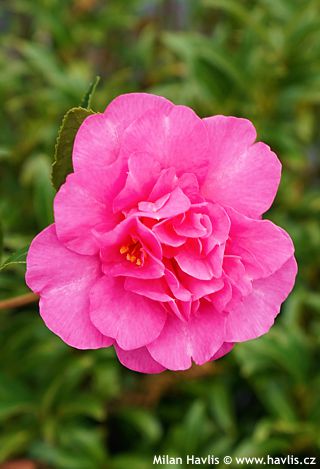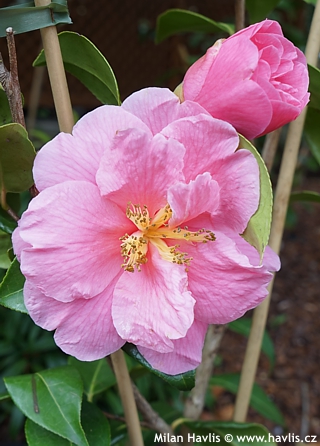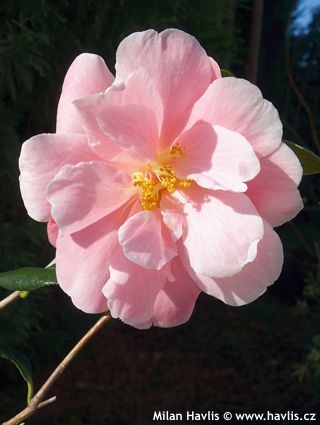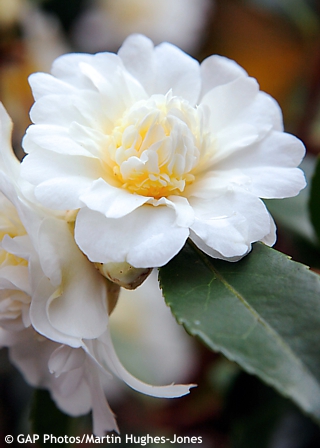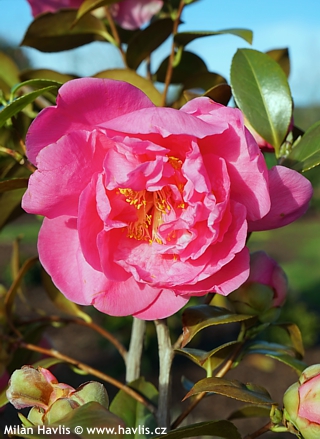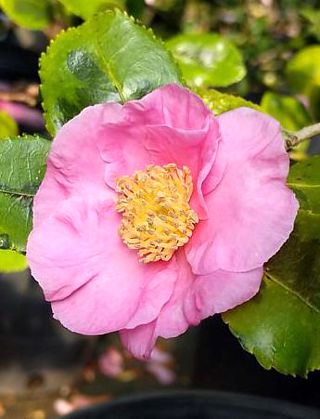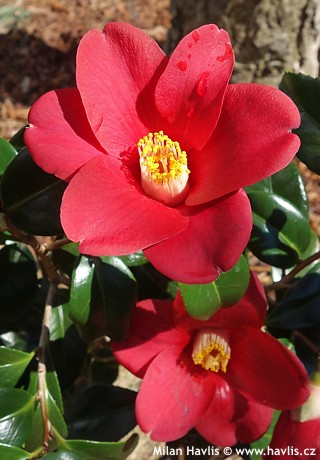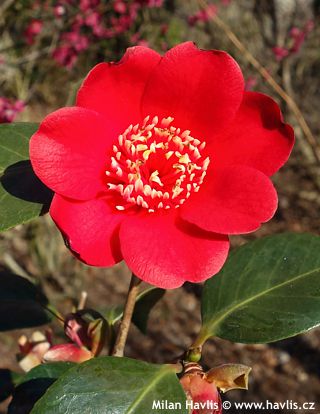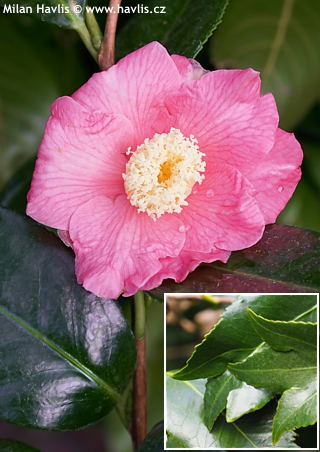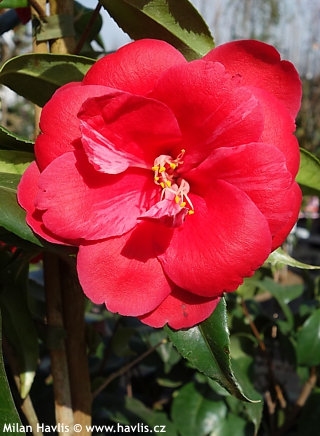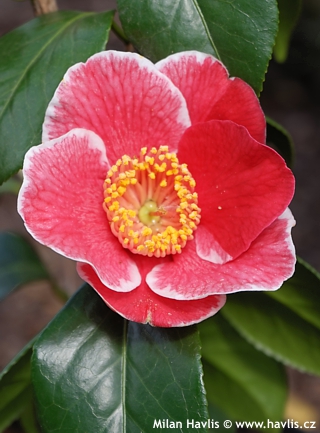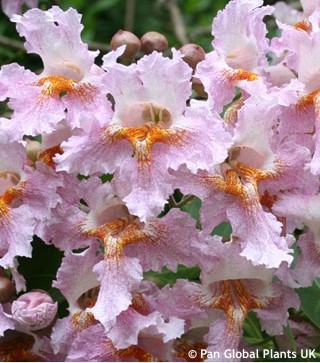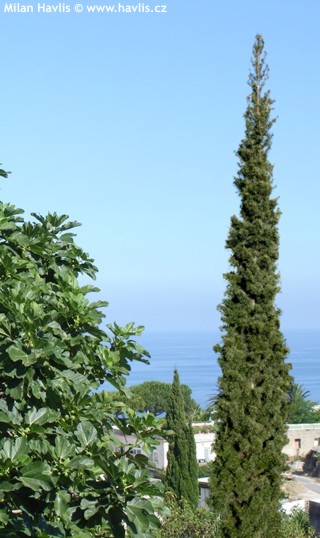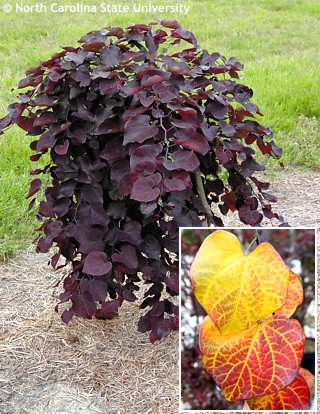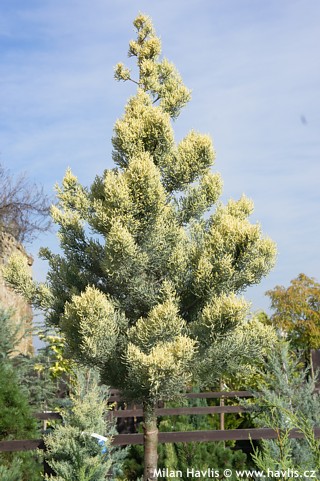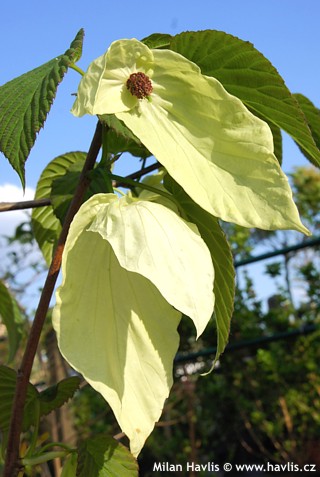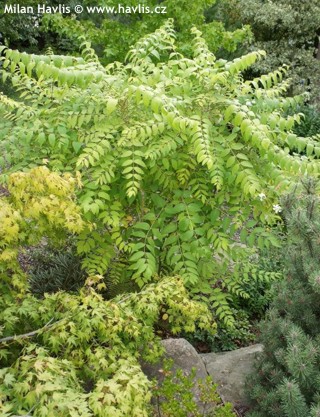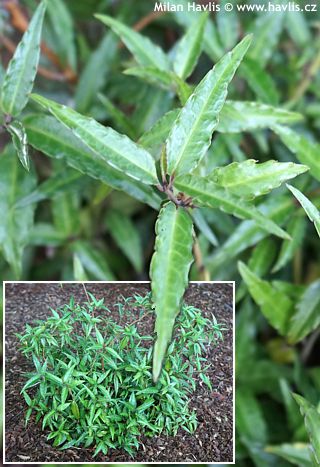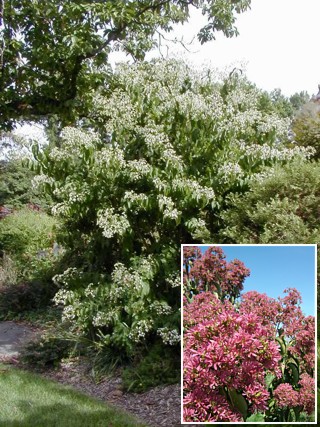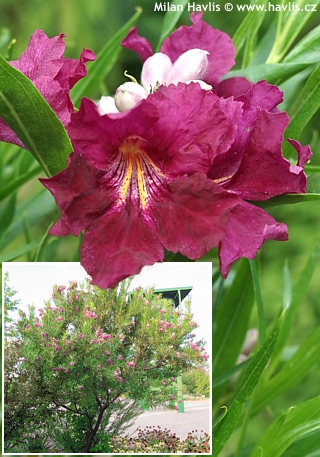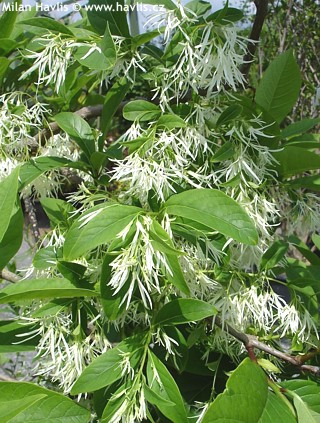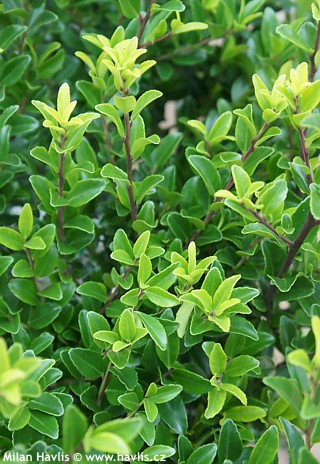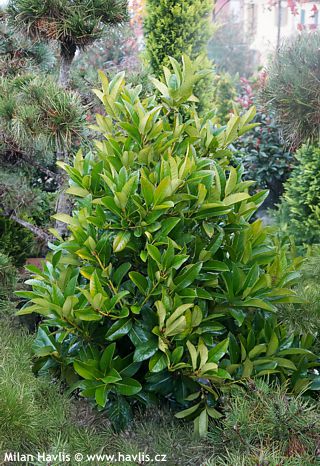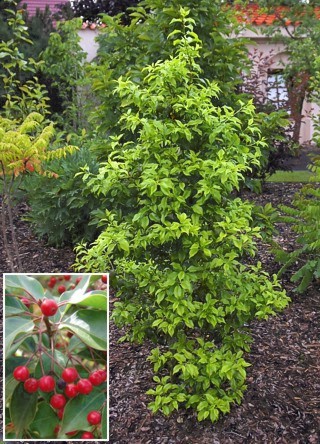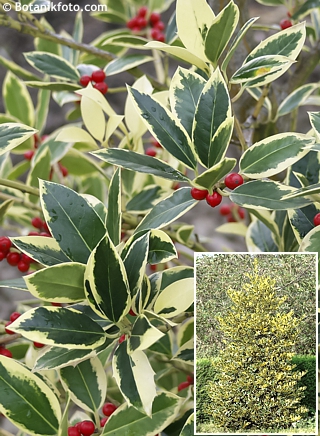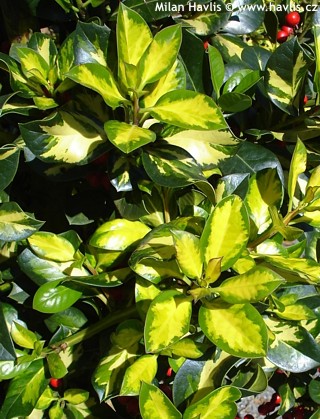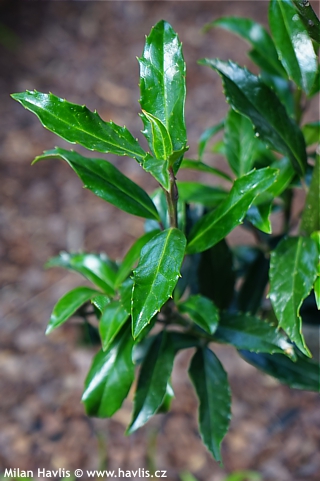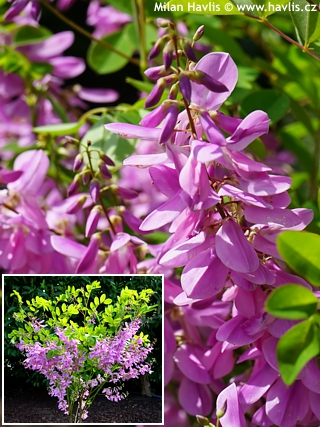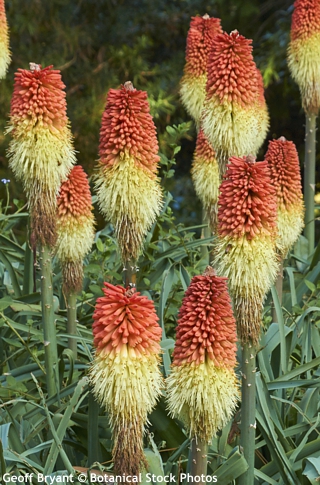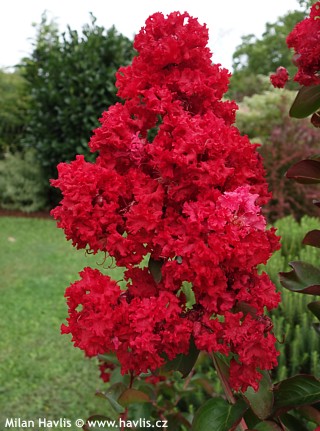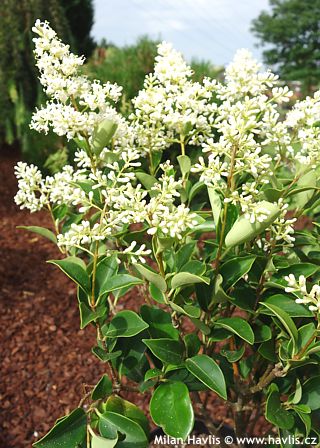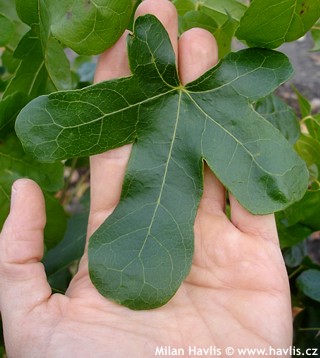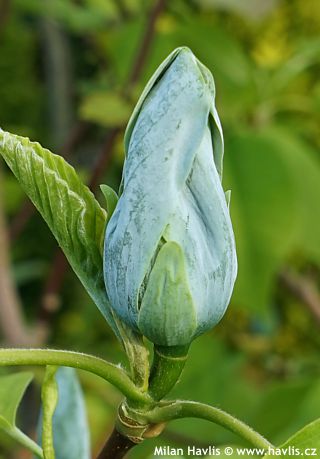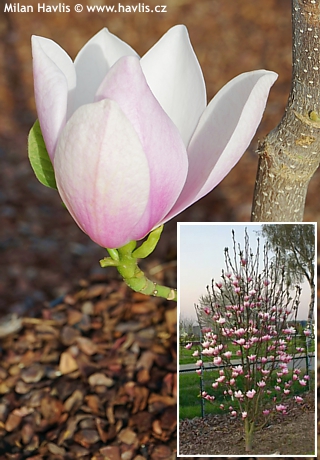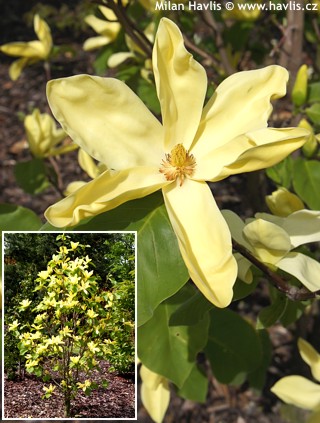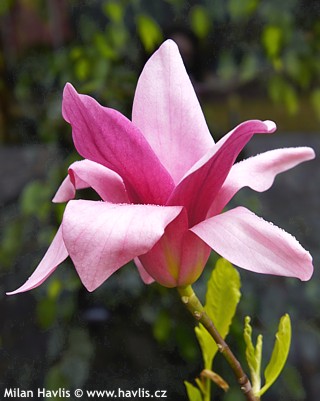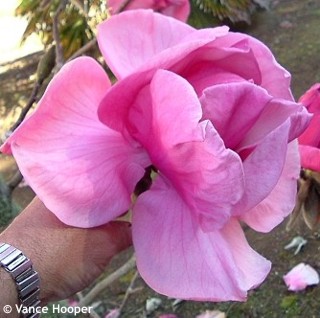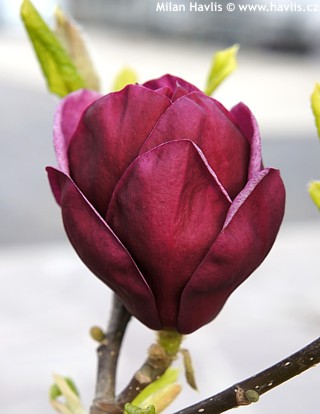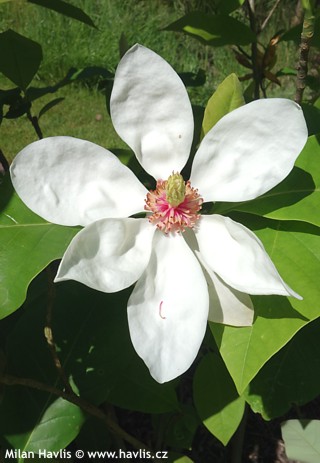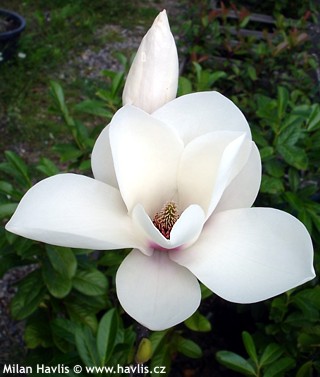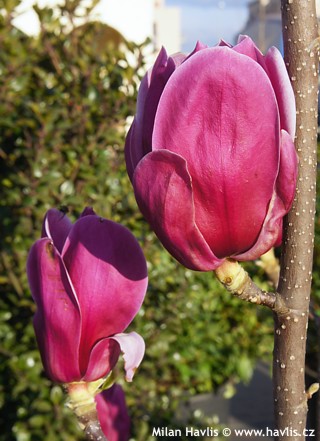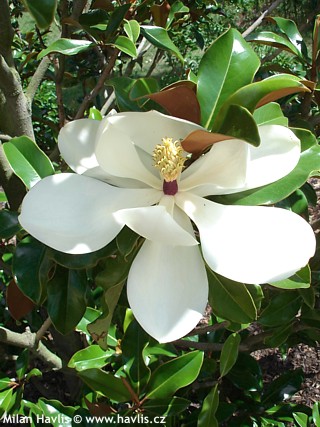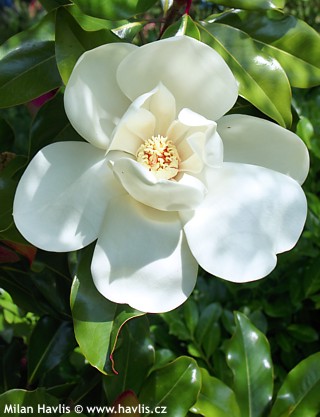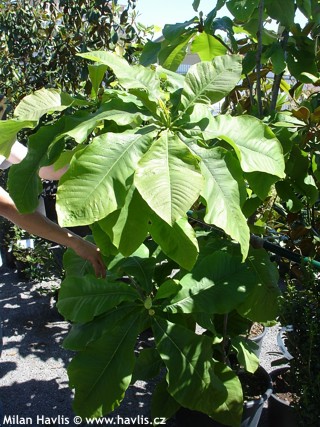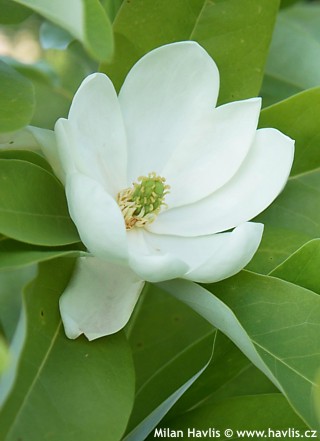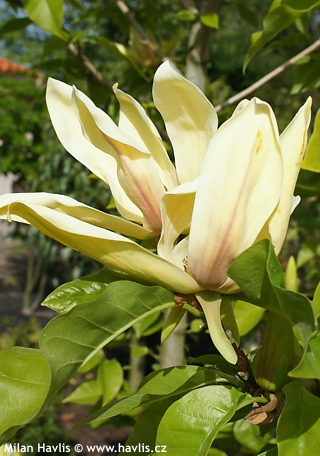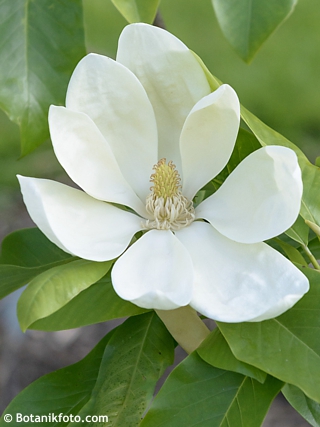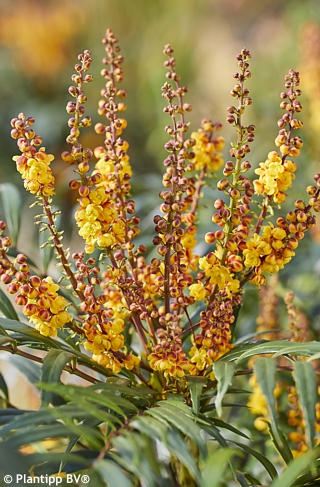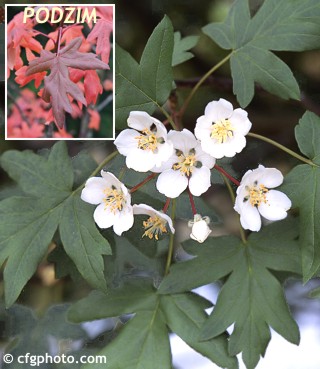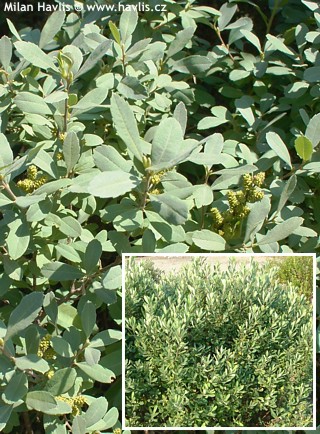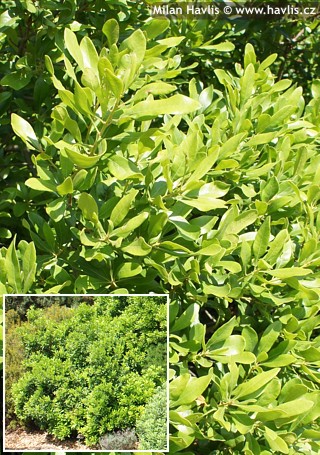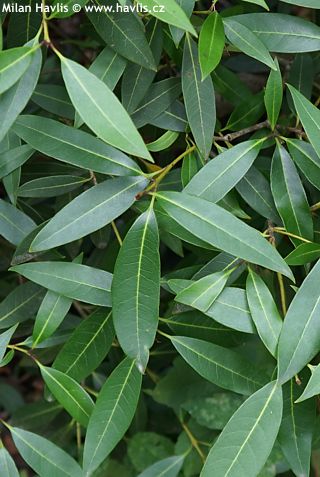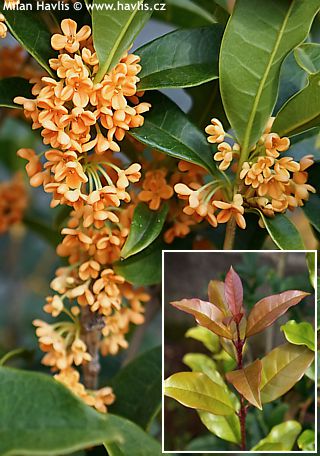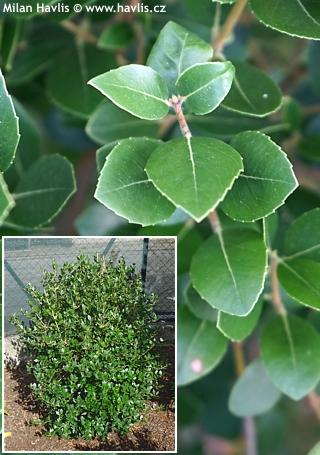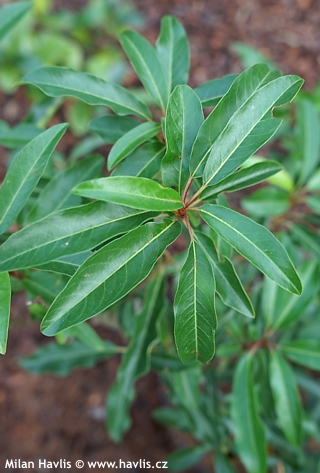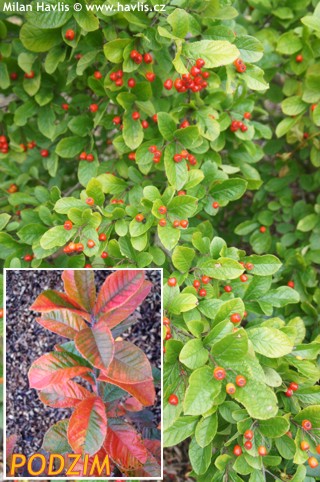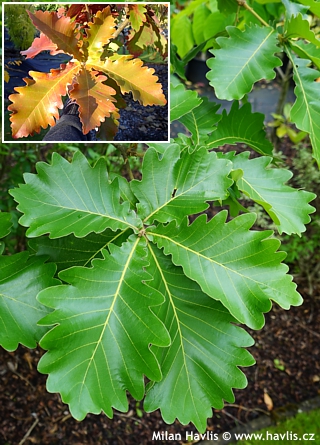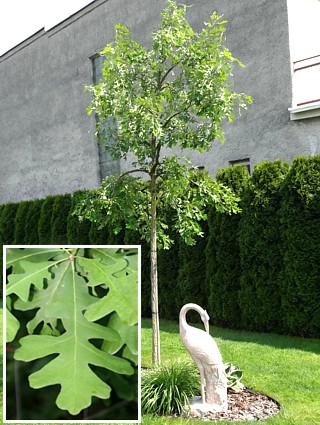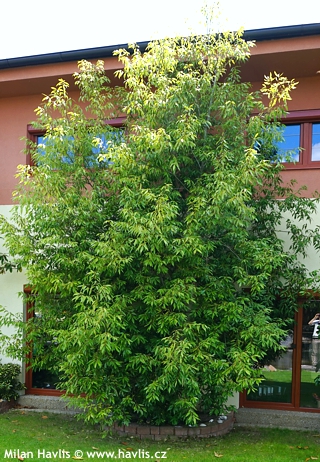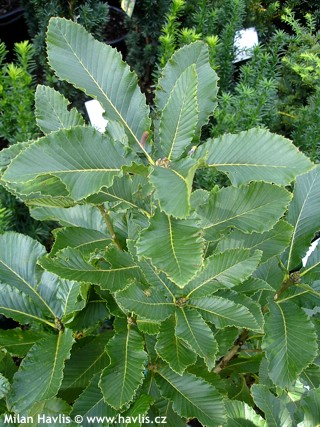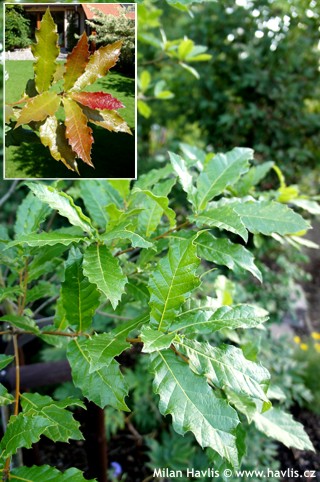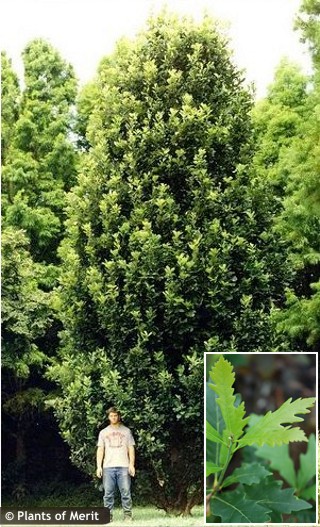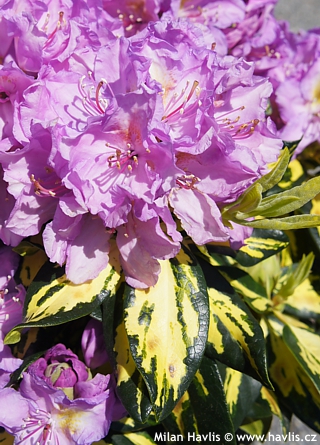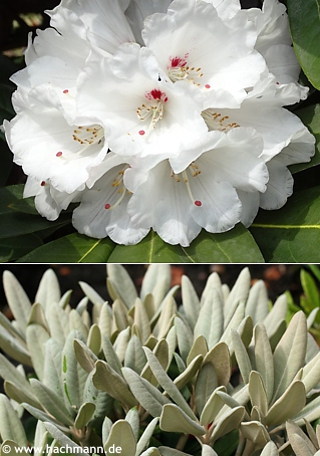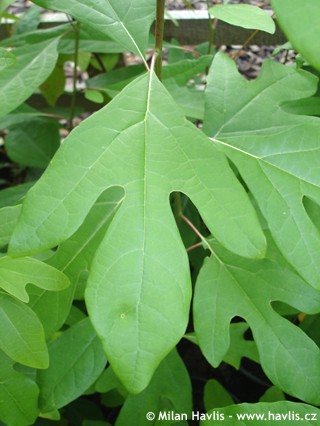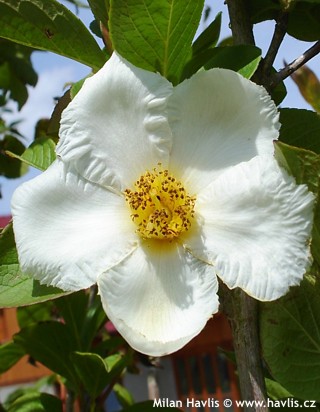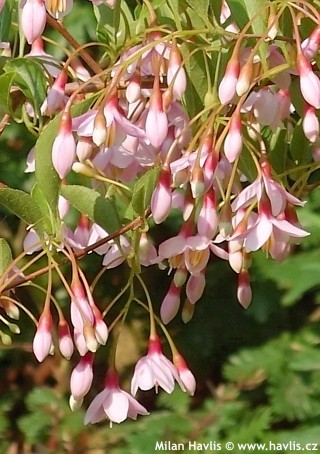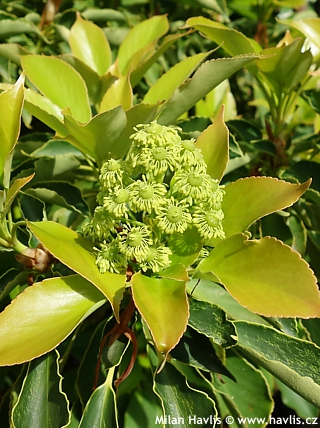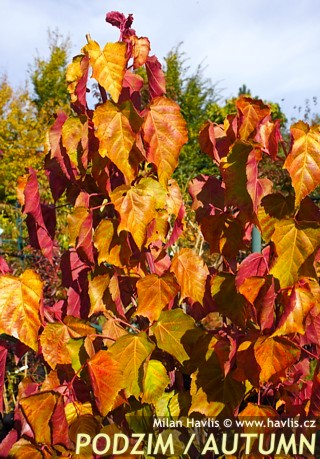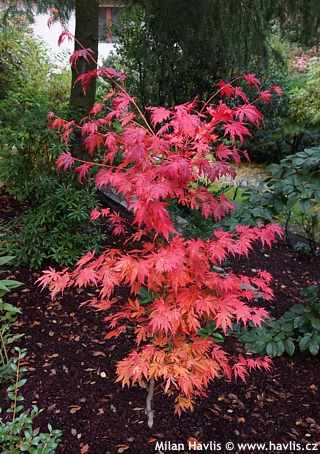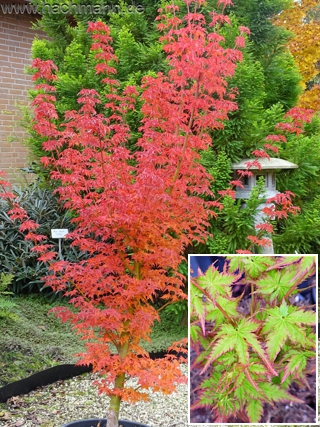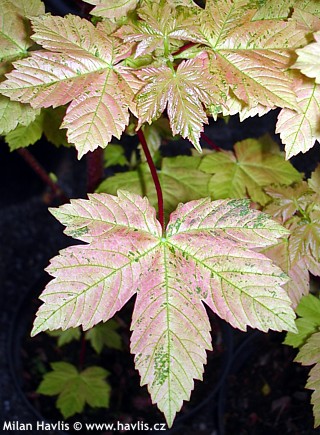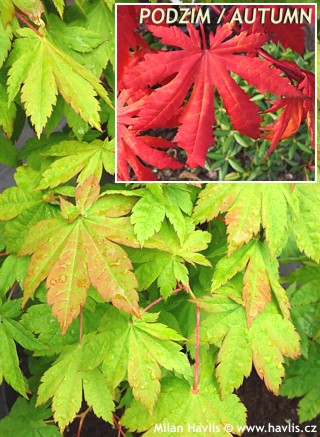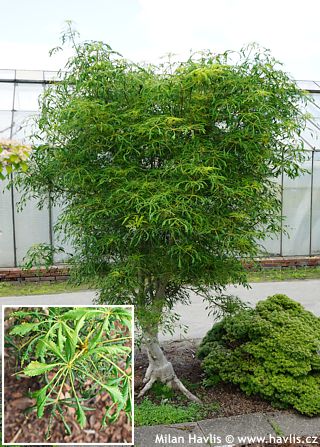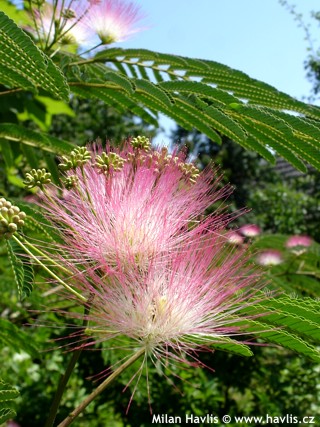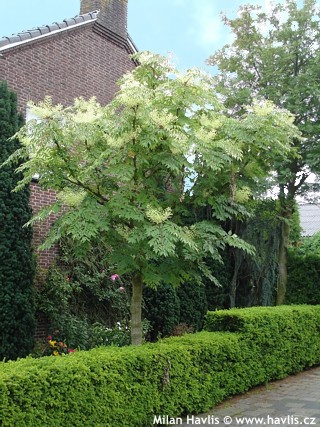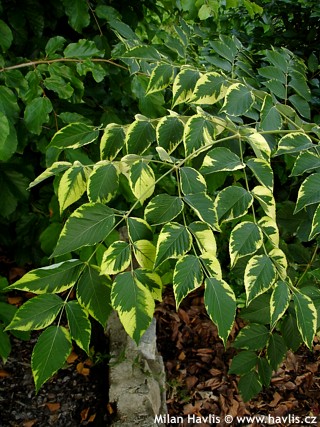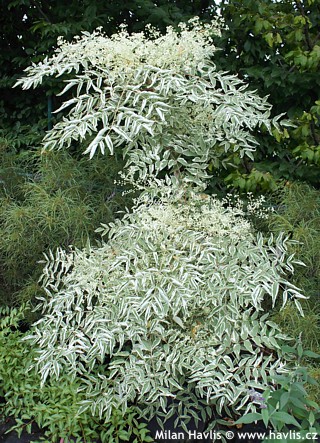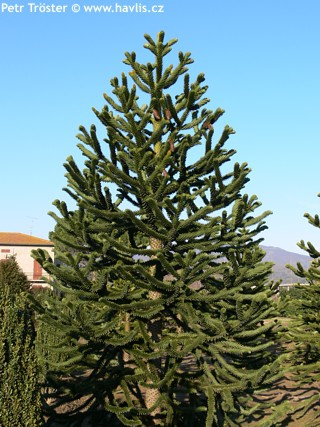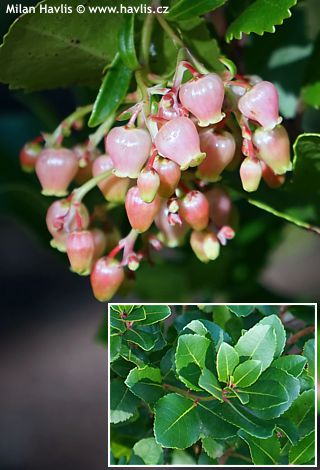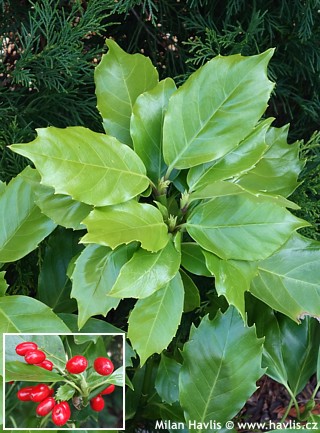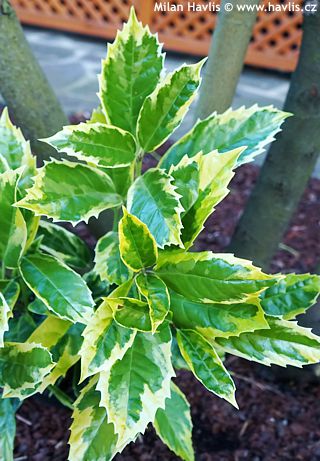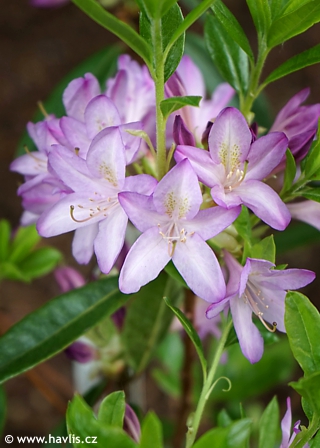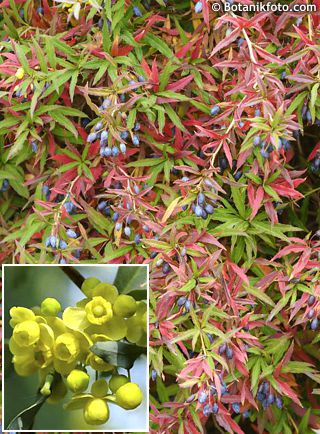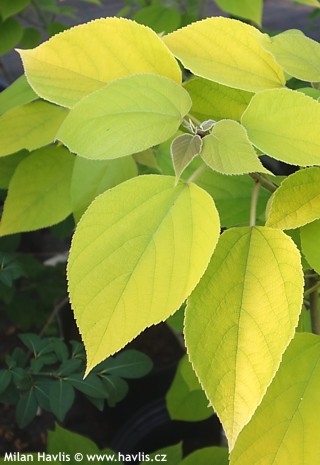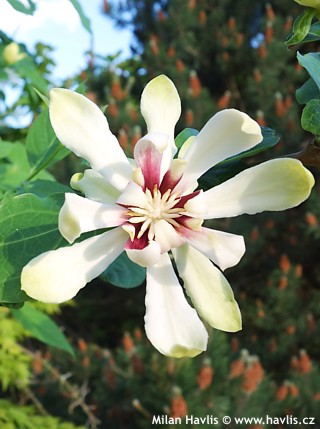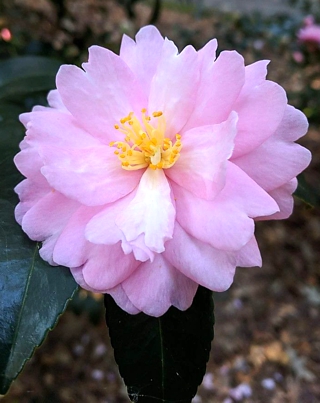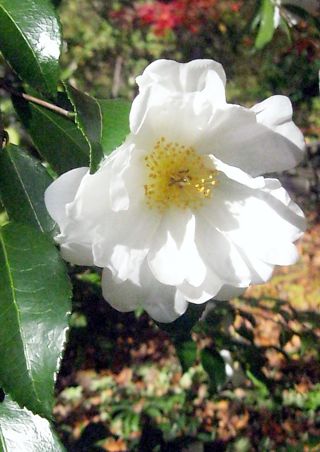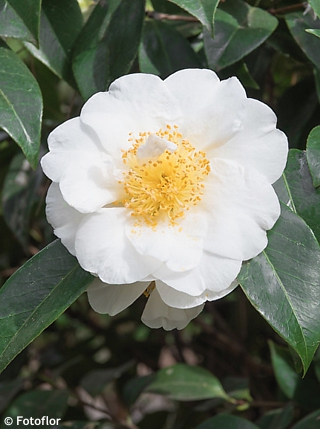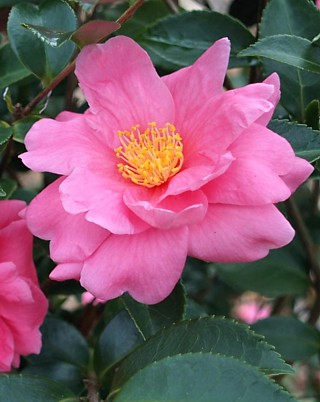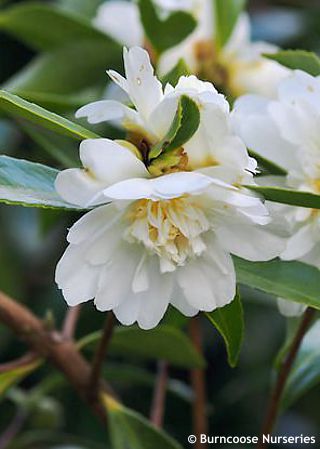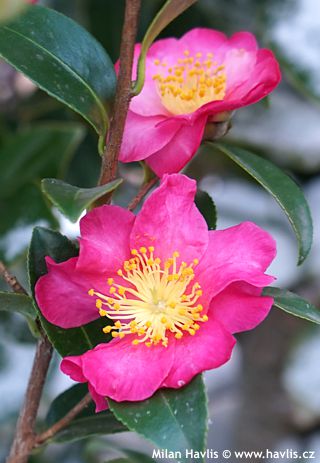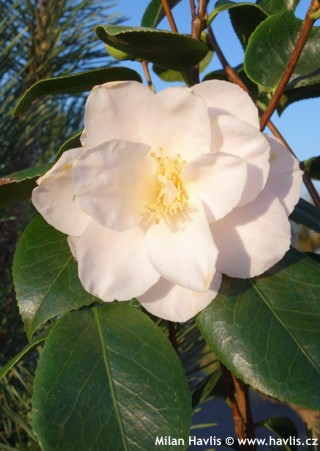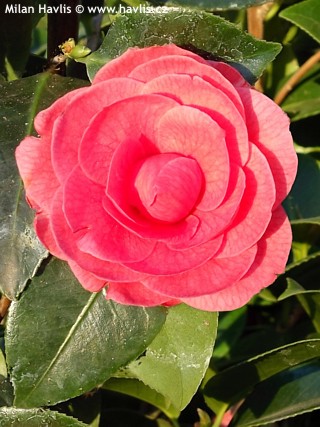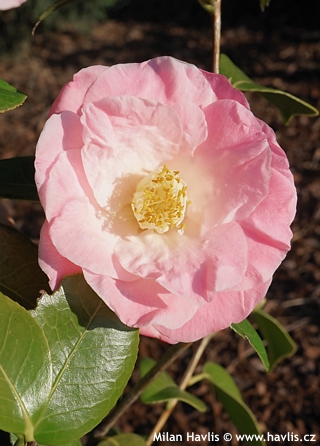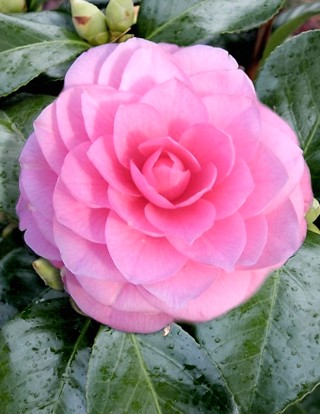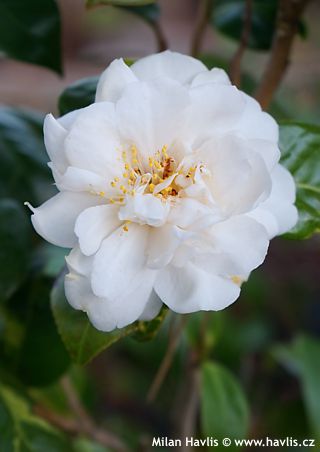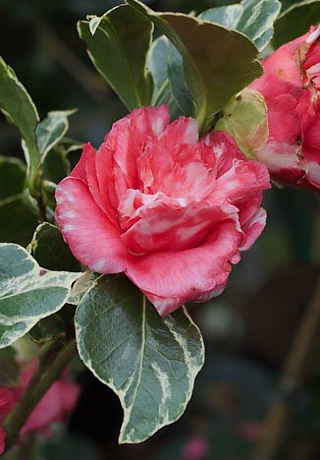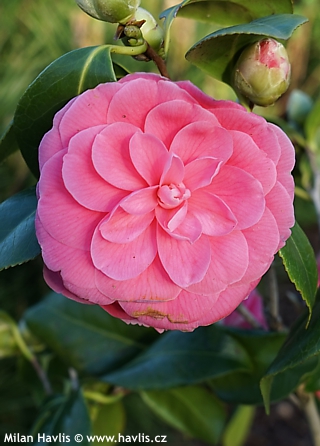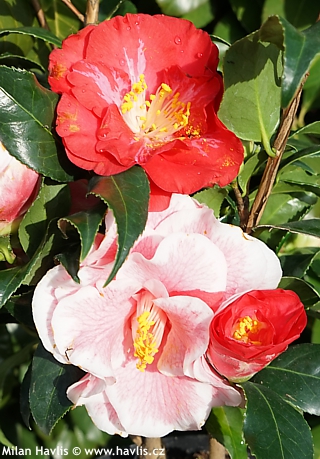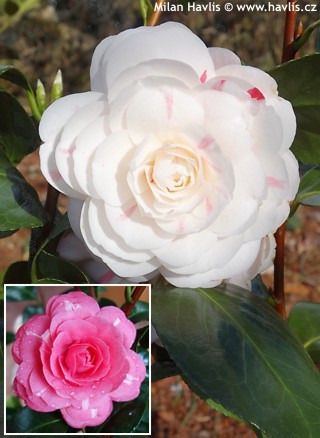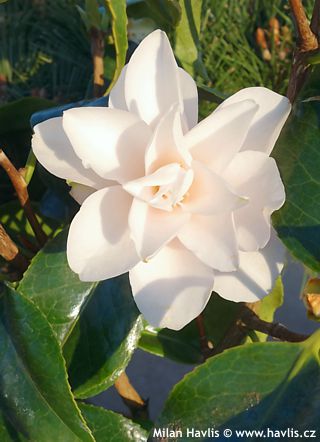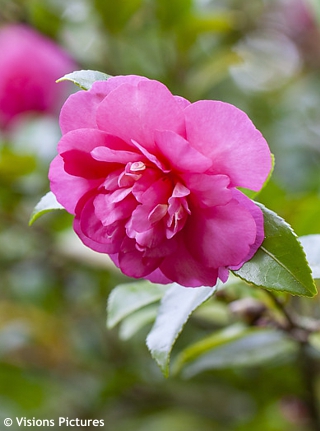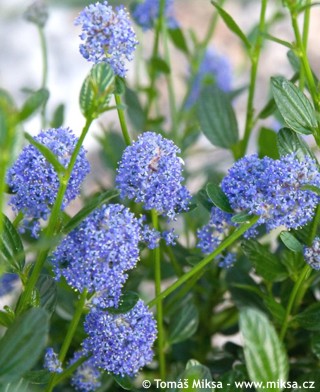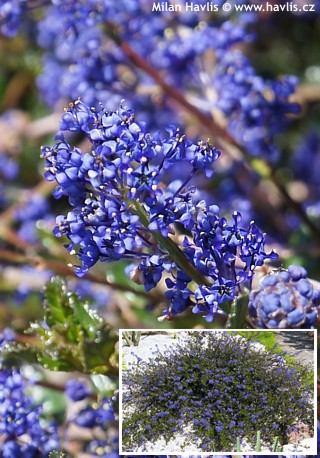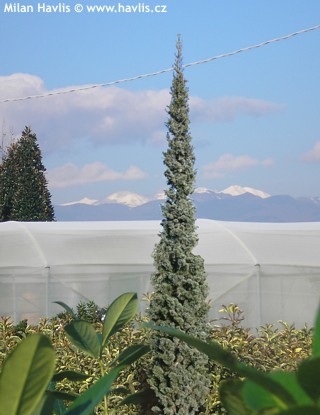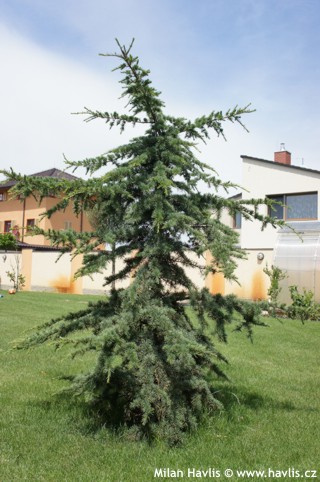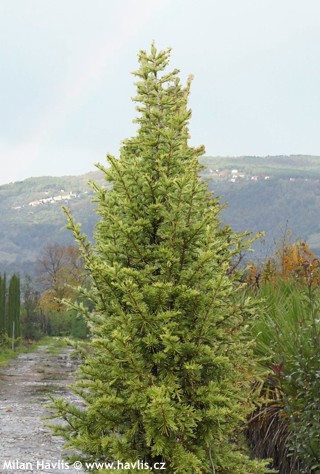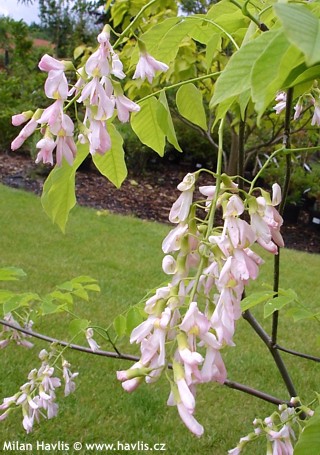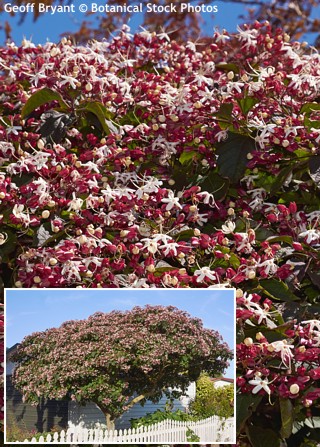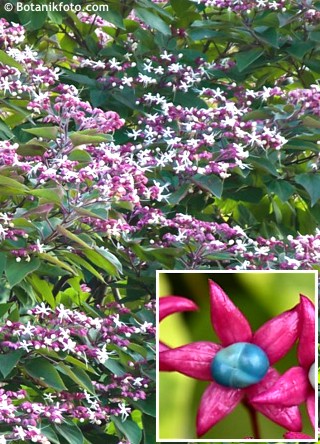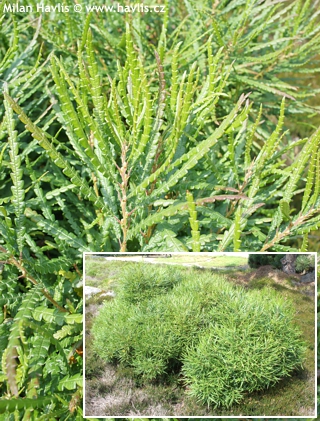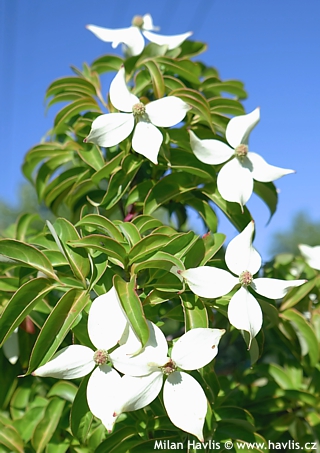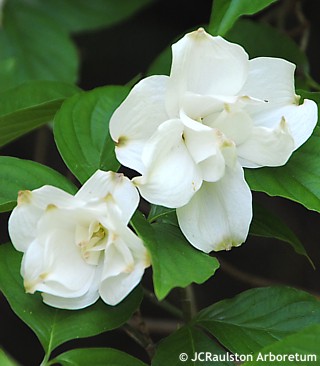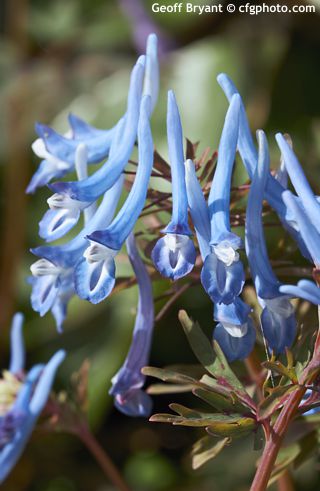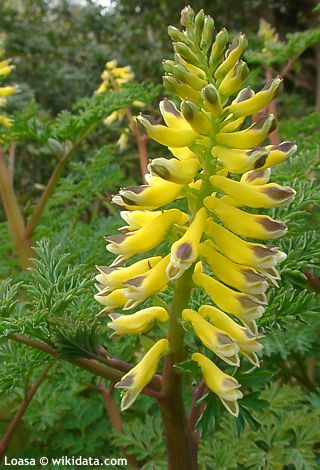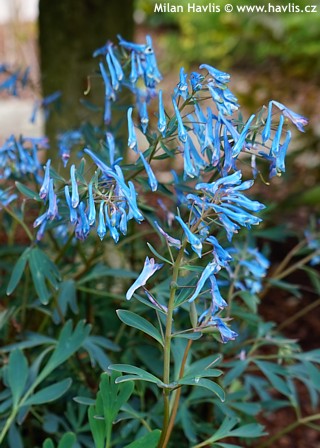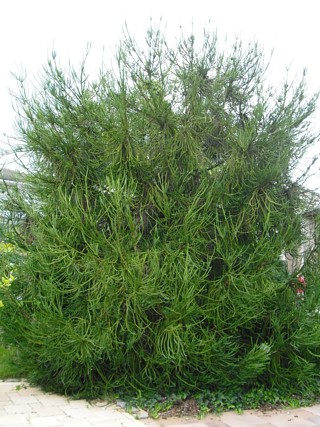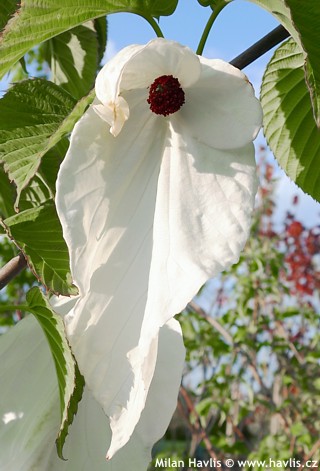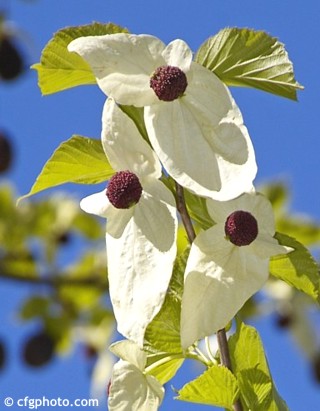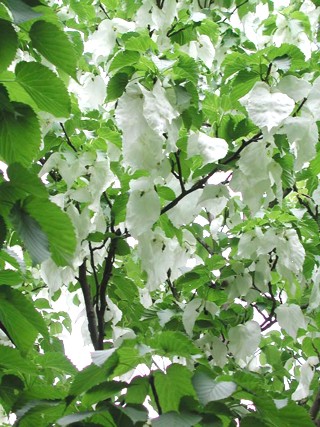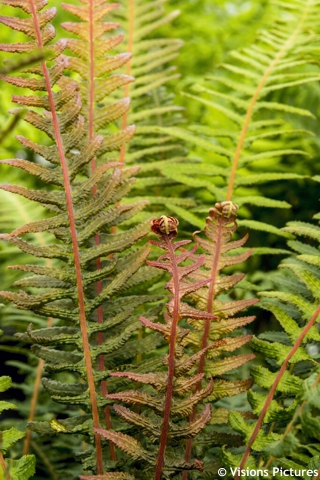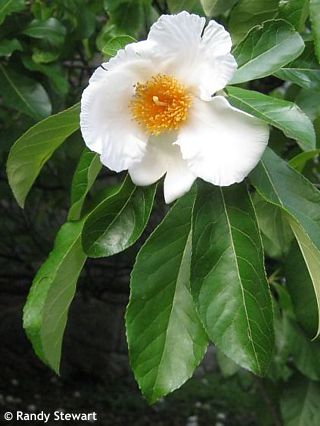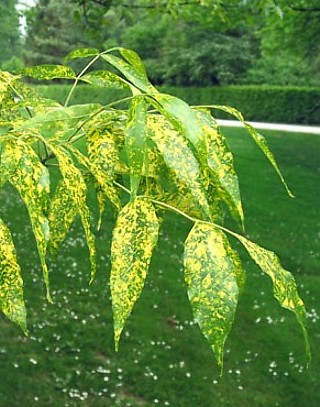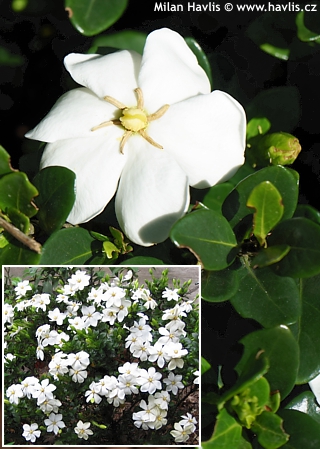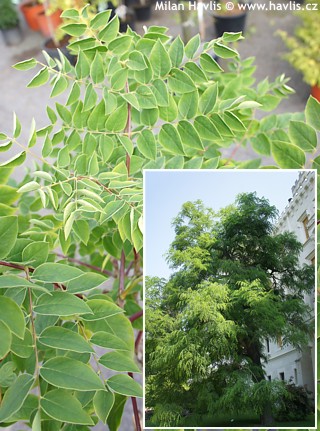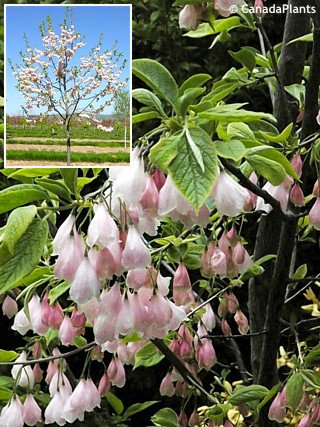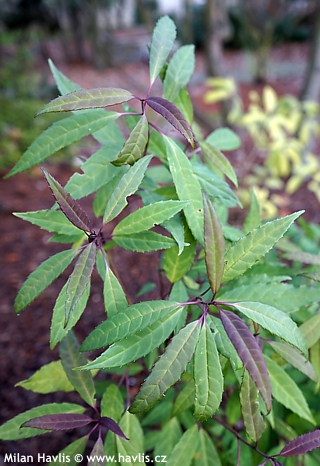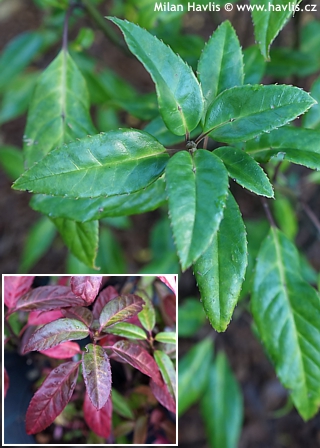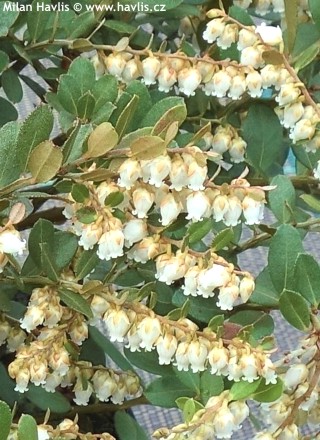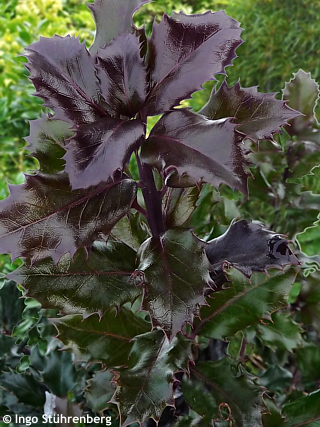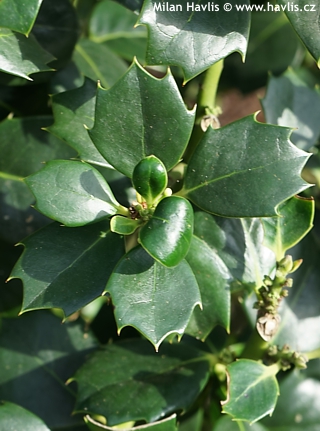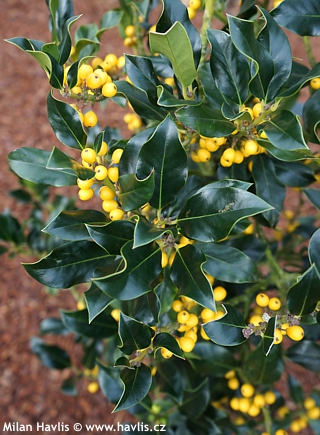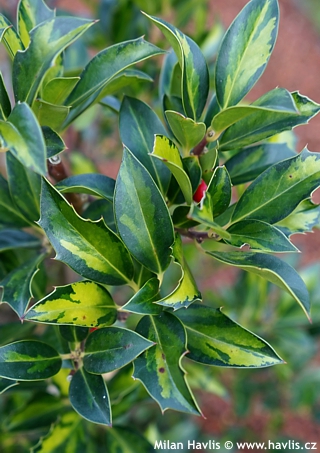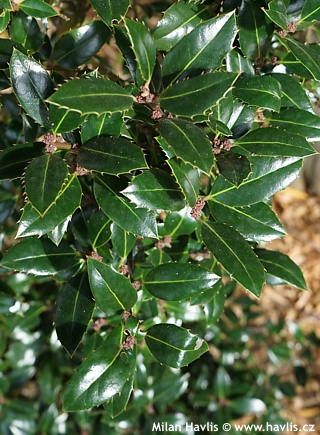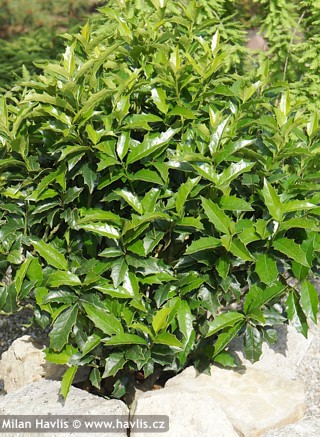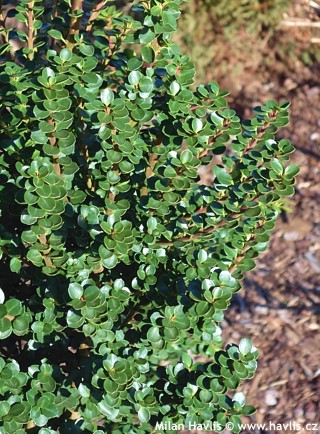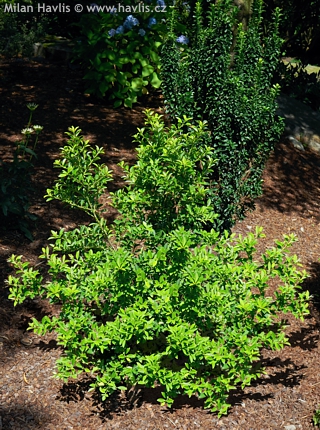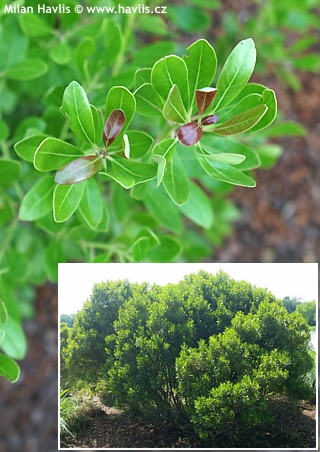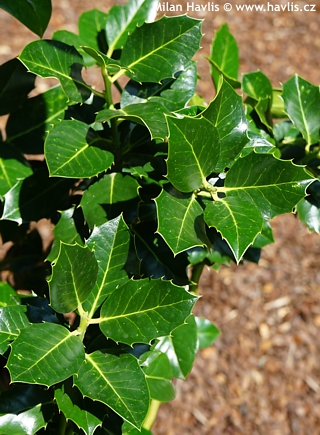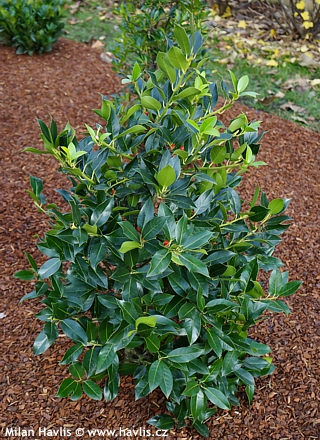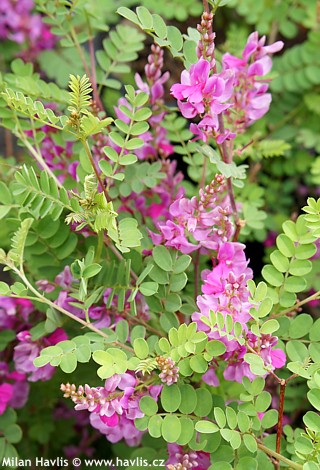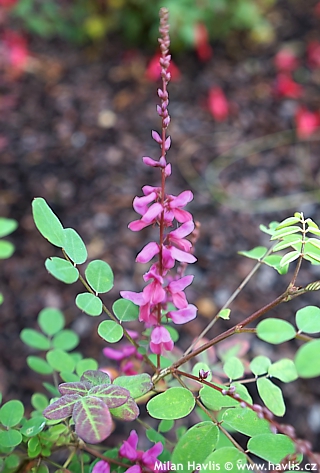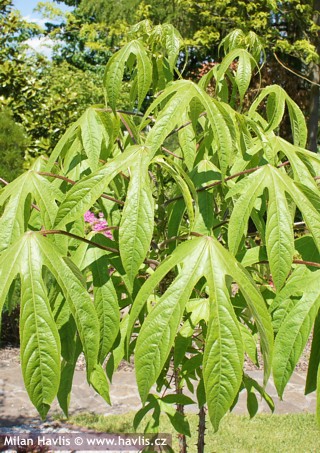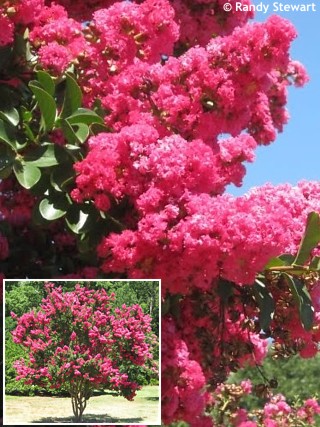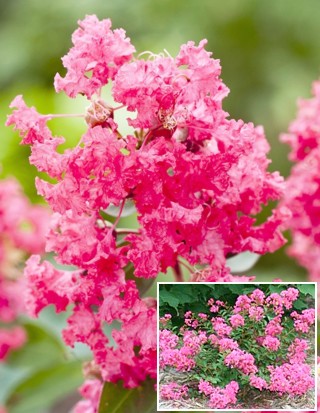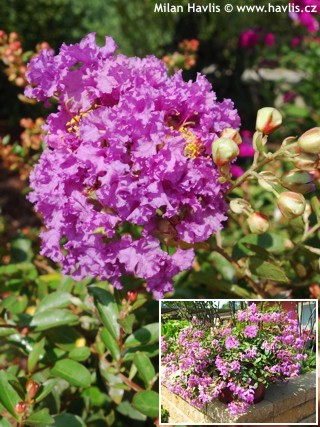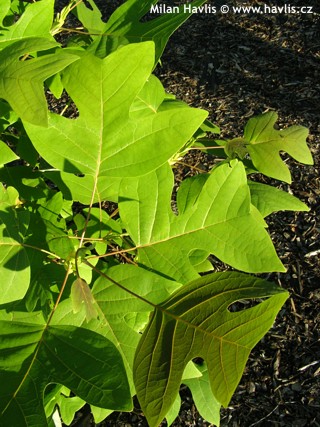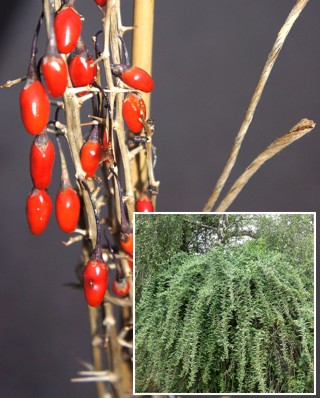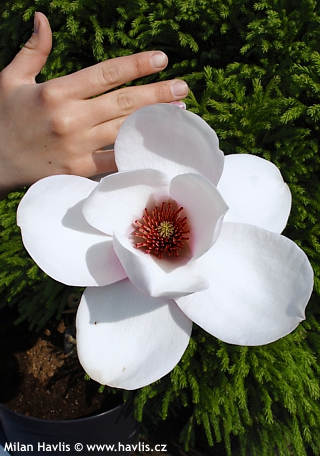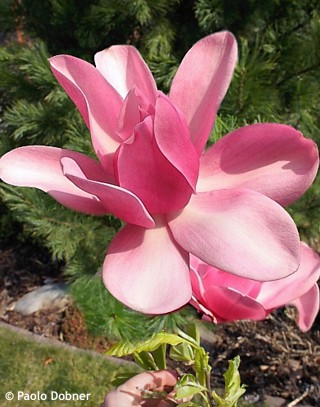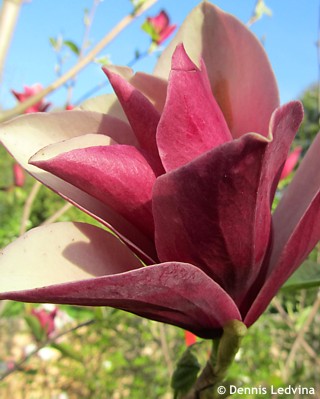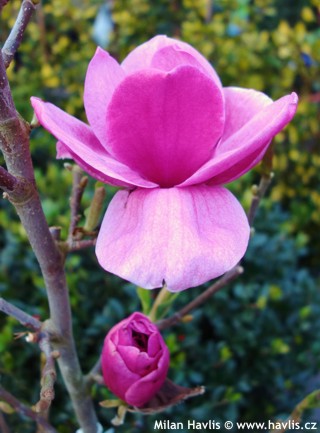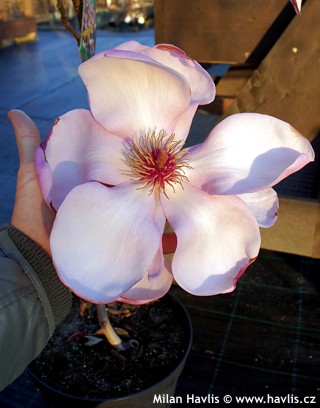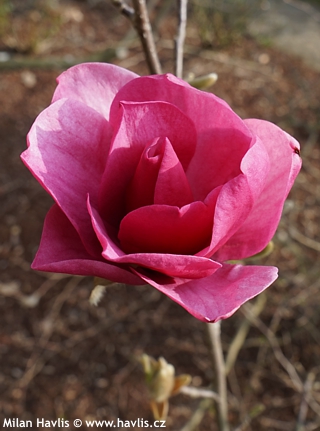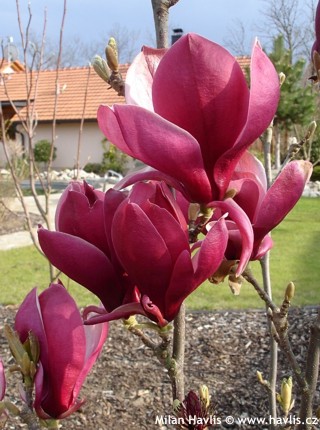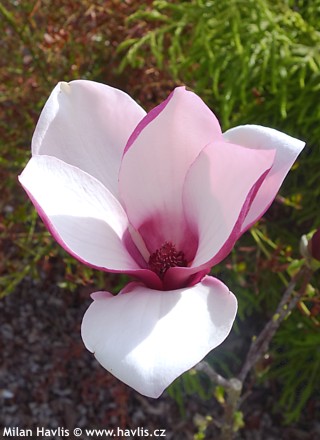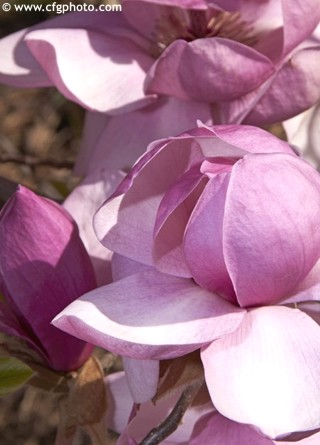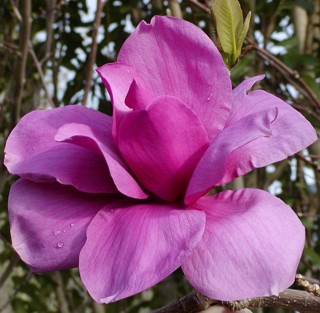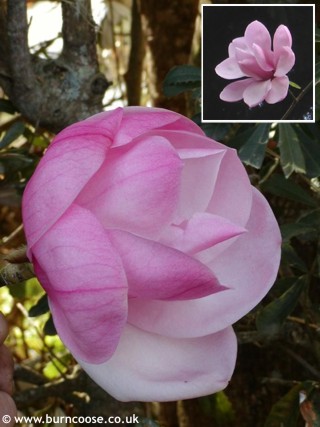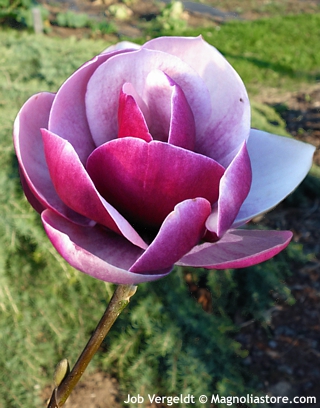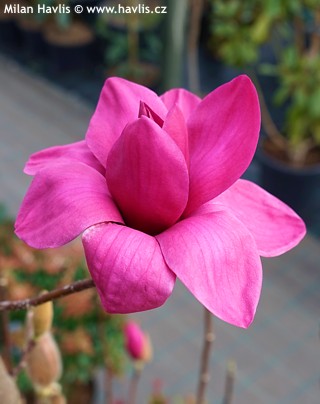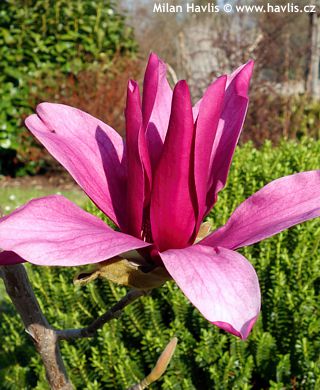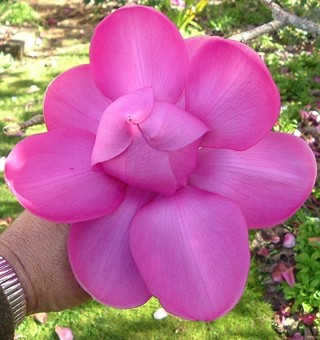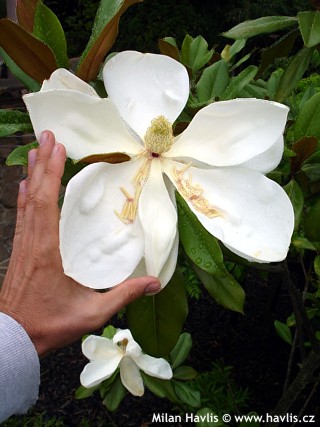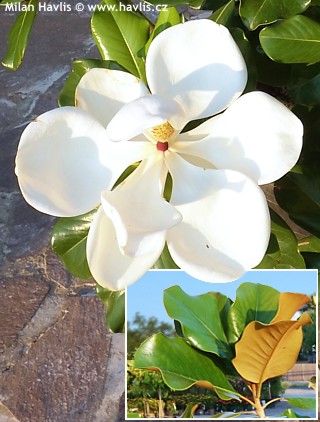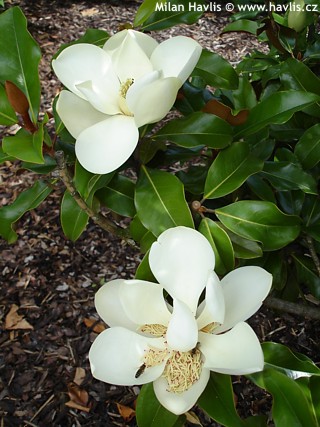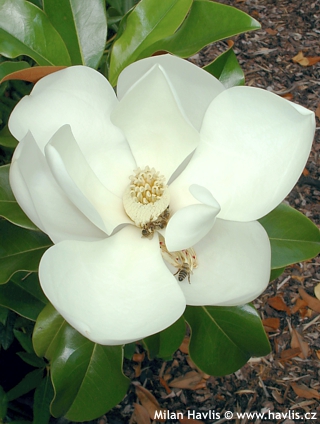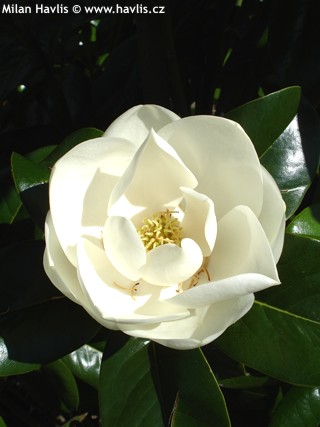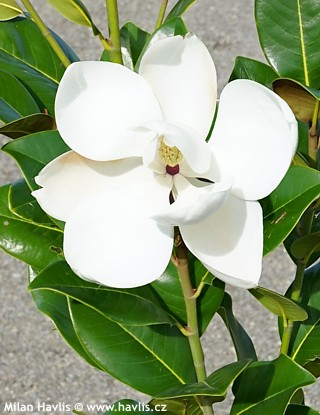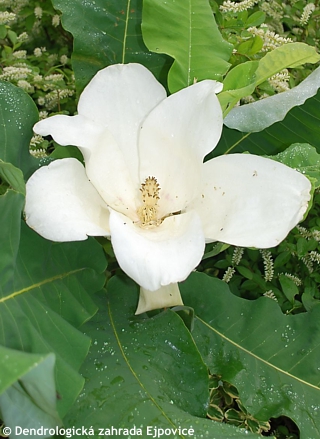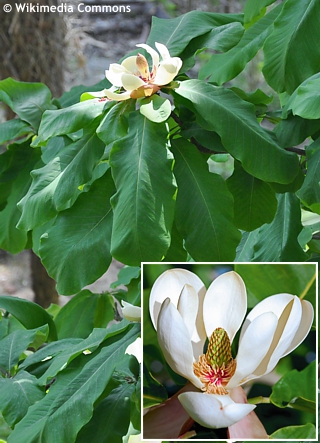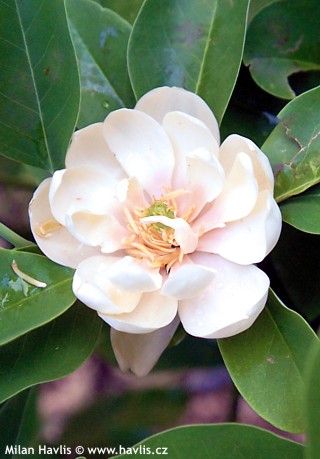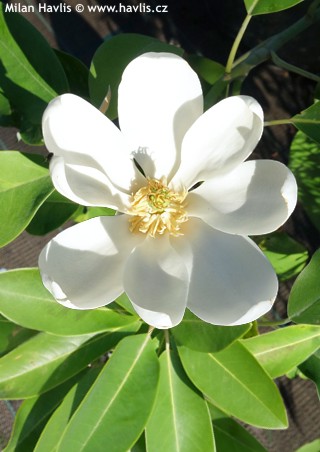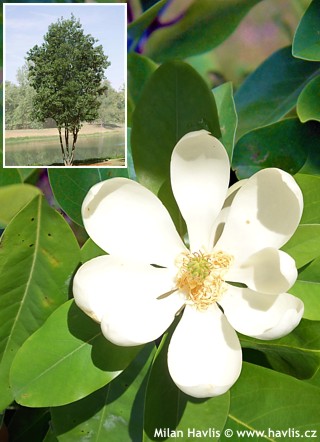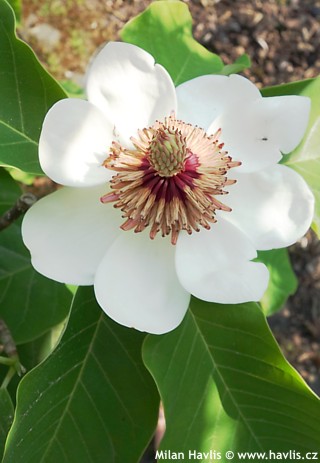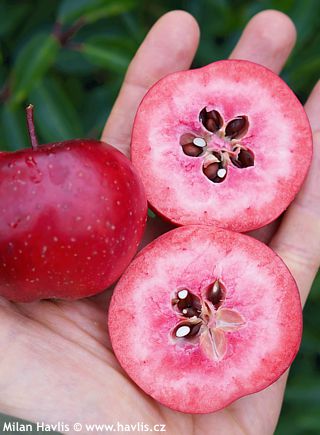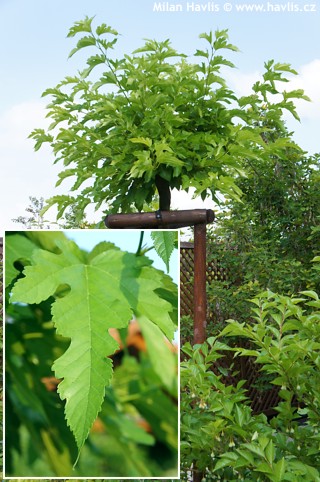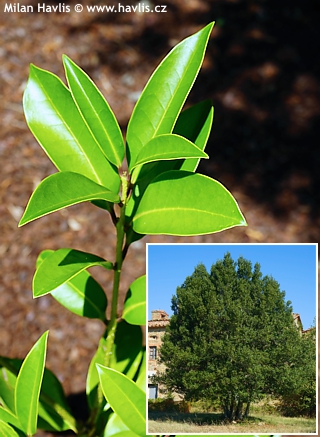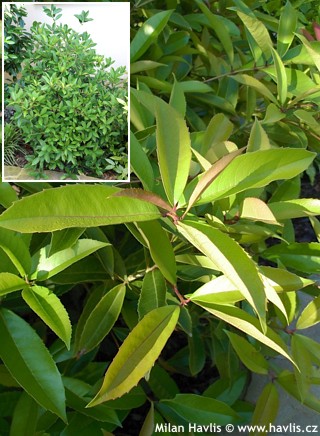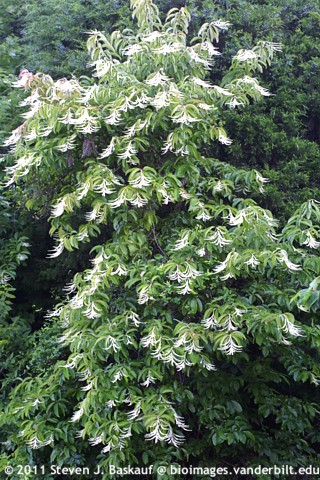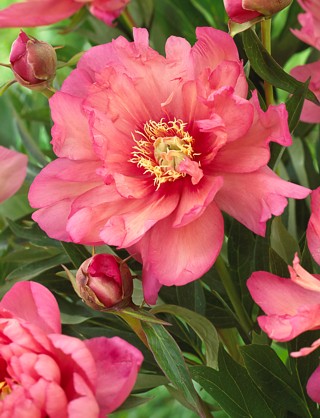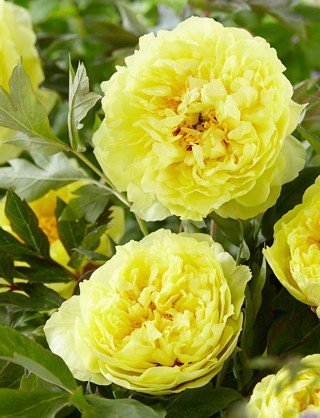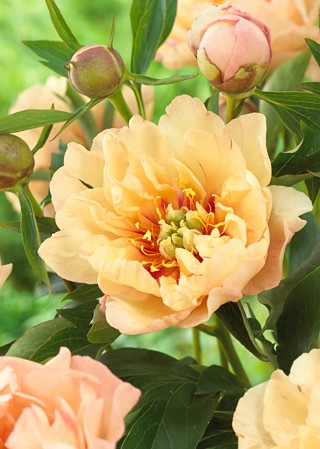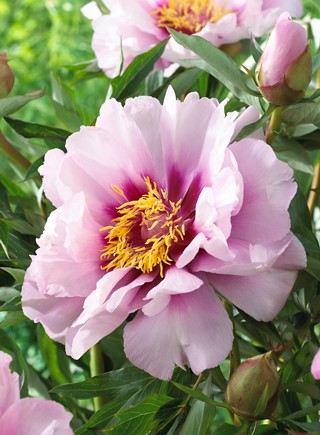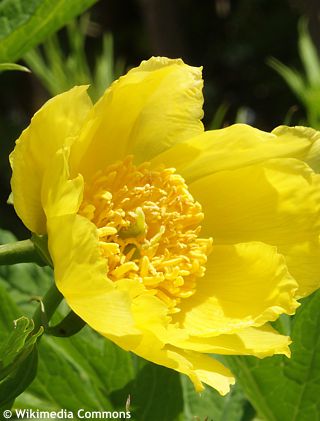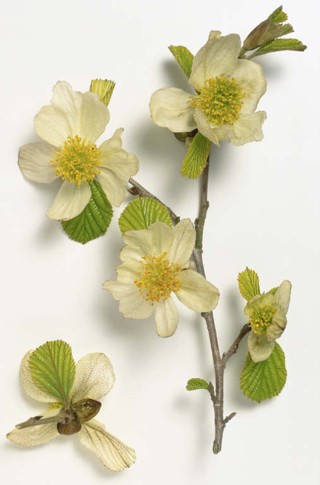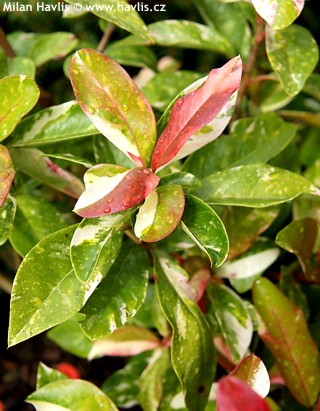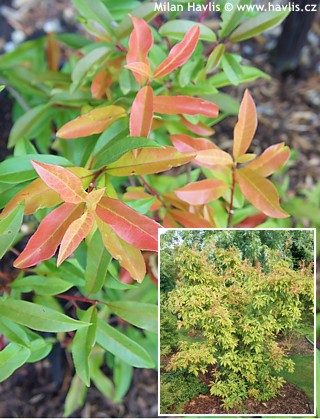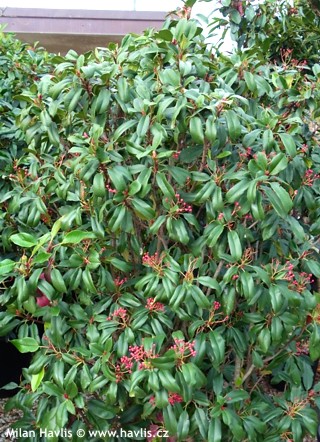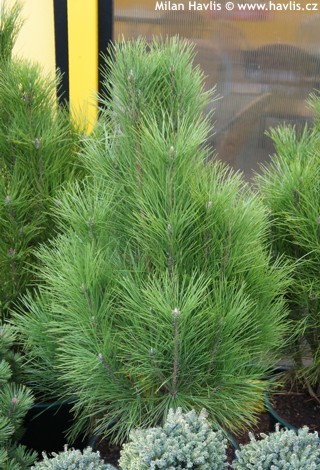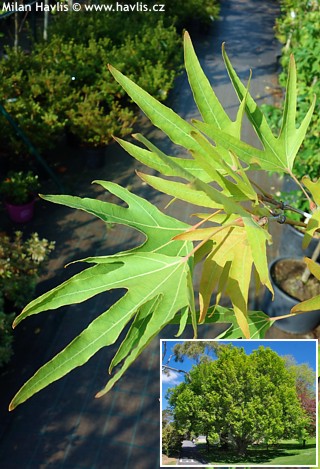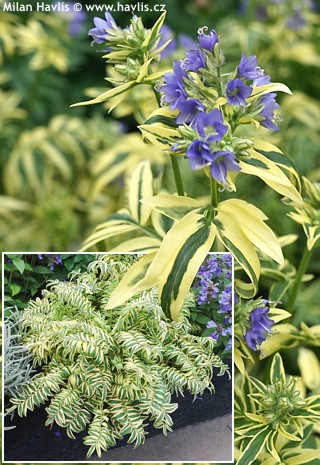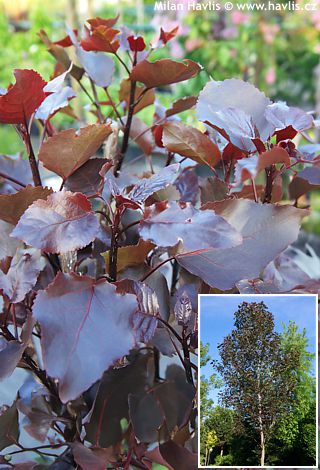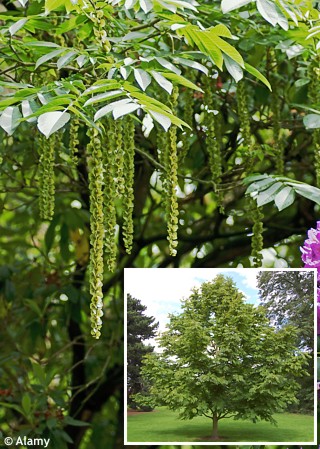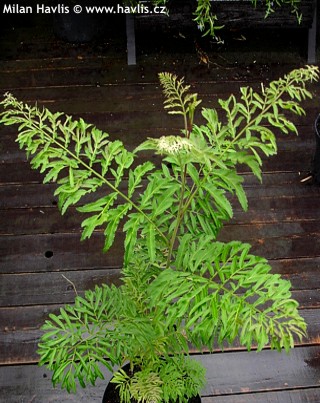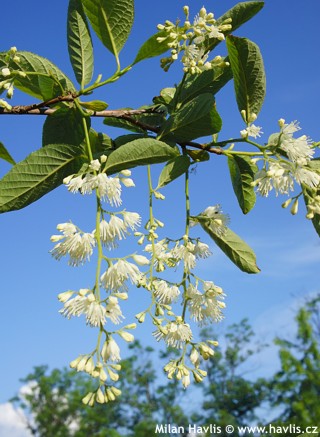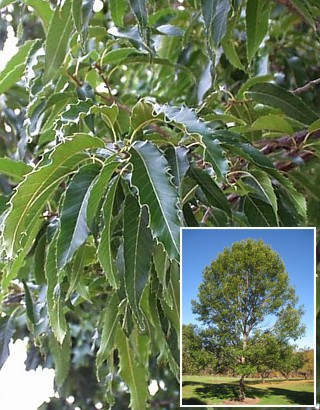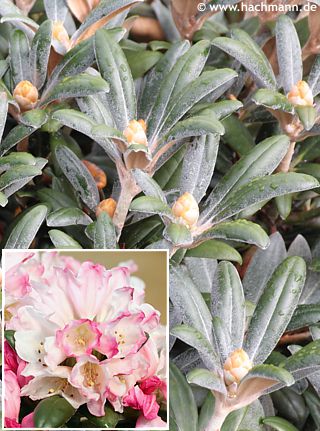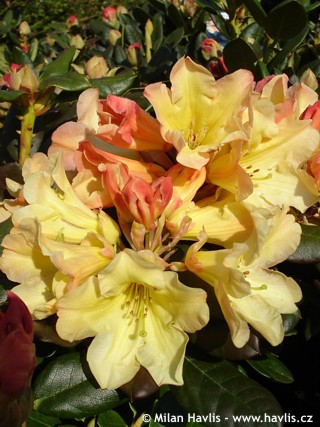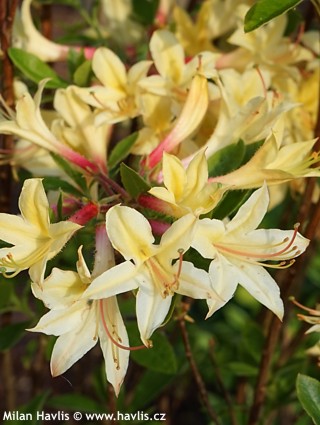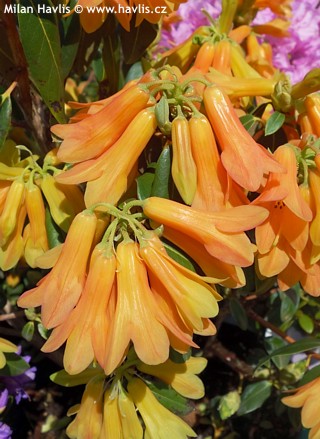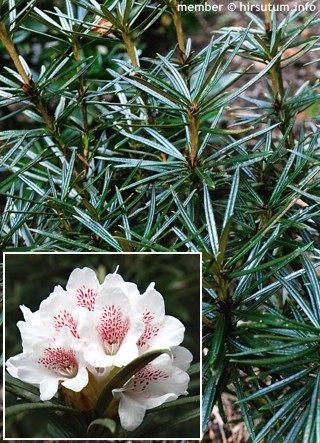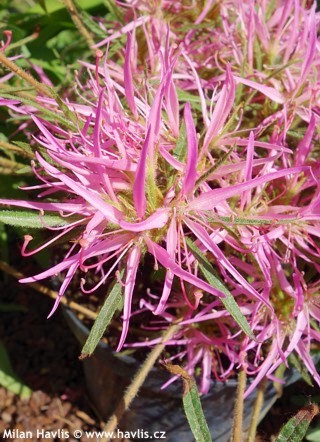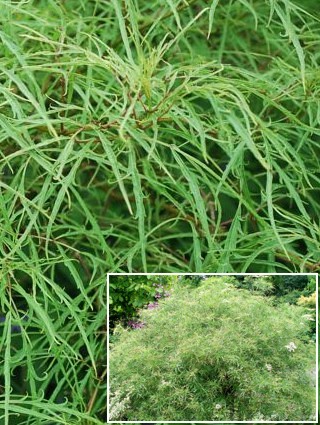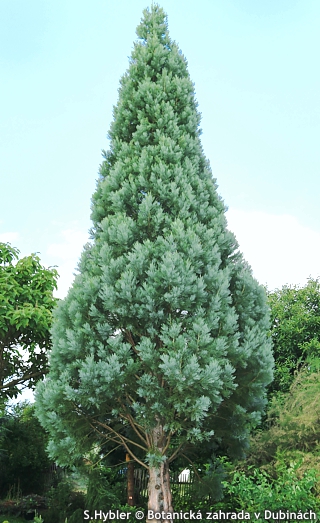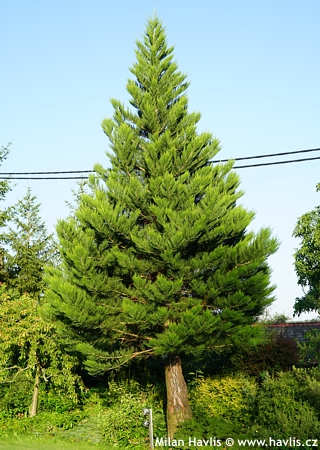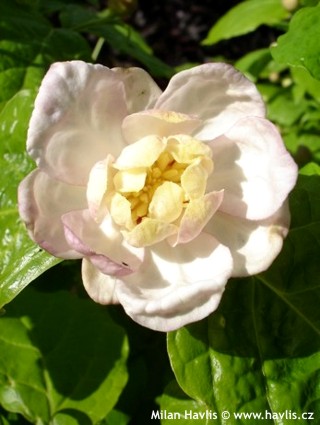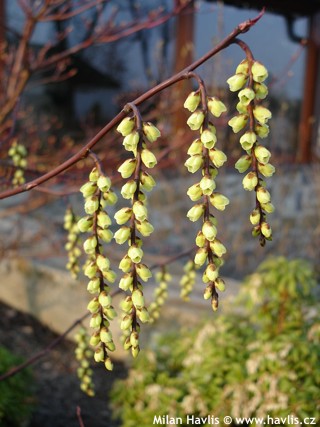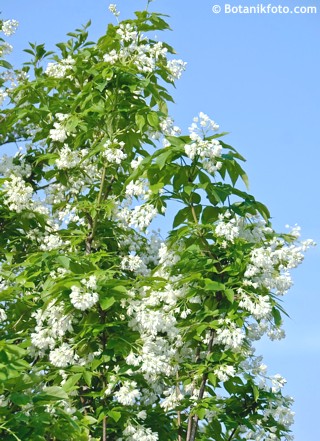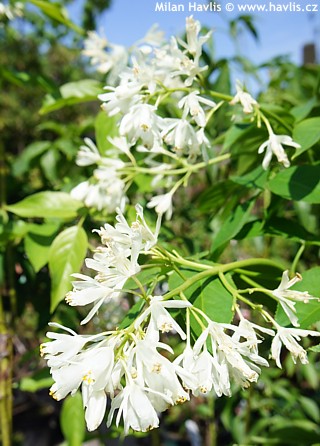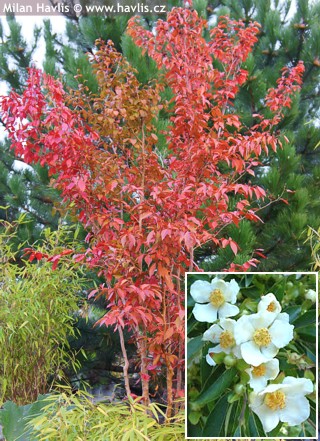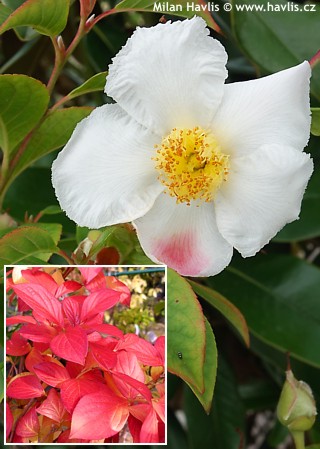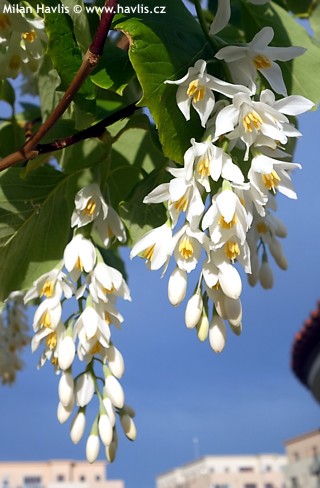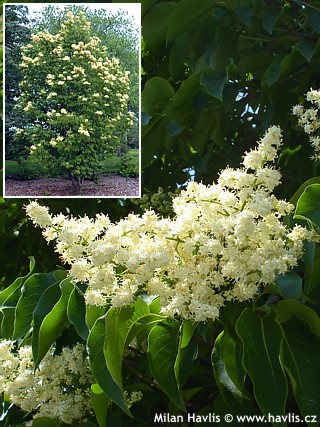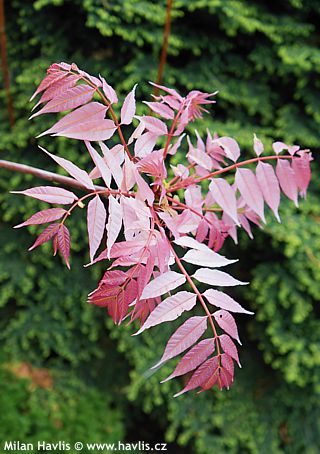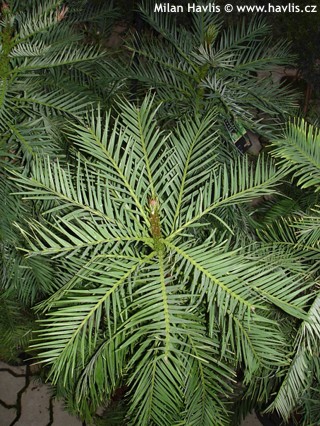CURRENTLY IN STOCK:
ICE DRAGON® is a hybrid Korean maple (a. palmatum x a. pseudosieboldianum), the smallest variety from the Jack Frost® series developed by Iseli Nurseries in Oregon, USA. It has finely cut, 7-lobed, deciduous leaves, almost identical to those on Japanese maples from the dissectum group. The ...

1,5 - 2,5m

2 - 3m

full sun

4 (down to -34°C)

for zone 5+6

for zone 7
Evi's Pride (also spelled Evey's Pride) is a purple-leaved form of silk tree which boasts with better hardiness and richer flowering as opposed to Summer Chocolate®. Its flowers are rich pink, hairy spheres with nearly white centres, 3-5 cm large and with a sweet fragrance. Fern-like, compound ...

VII - VIII

3 - 5m

3 - 6m

full sun

7 (down to -23°C)

for zone 5+6

for zone 7
A spectacular new variety of silk tree comes from Japan and is called Summer Chocolate®. It was discovered in 1990 as a seedling in a controlled planting of Albizia julibrissin in 1990. It was patented in the USA under PP 13,822 in 2003. It is considered a rarity for lovers of exotic-looking pl ...

VII - VIII

2 - 5m

2 - 5m

full sun

6b (down to -21°C)

for zone 5+6

for zone 7
Atlantic is a French variety of strawberry tree selected and introduced by the Pepinieres Minier in 1993. It boasts a neat and well-behaved habit, dense branching, and improved hardiness. Its evergreen leaves are narrowly obovate, 5-7 cm long, finely serrated at margins, they emerge bronze red and r ...

V

2 - 3m

1 - 2m

full sun

7 (down to -23°C)

for zone 5+6

for zone 7
Compacta is a strawberry tree selection found many years ago as a seedling of the species. It boasts a neat and well-behaved habit, dense branching, and improved hardiness. Its evergreen leaves are narrowly obovate, 5-7 cm long, finely serrated at margins, they emerge bronze red and remain soft gree ...

IX - V

1,5 - 3m

1 - 2m

full to partial sun

7 (down to -23°C)

for zone 5+6

for zone 7
Salicifolia is a Japanese laurel variety from the longifolia group. It has very attractive, evergreen, partially drooping, narrowly lance-shaped leaves that are highly glossy and almost lack typical serration at margins. They look quite exotic and densely cover the plant. In mid spring numerous, sma ...

0,8 - 1,5m

0,8 - 1,8m

full sun to shade

7 (down to -23°C)

for zone 5+6

for zone 7
Pink Spider is a fabulous Japanese azalea for collectors who obviously do not suffer from arachnophobia. This exotic looking jewel produces semi-double flowers with narrow, acuminate flower petals. They are bright pink with purple pink dotting and white margins. They open in profusion from about mid ...

V

0,6 - 0,8m

0,6 - 1m

semi-shade / partial sun

7a (down to -18°C)

for zone 5+6

for zone 7
Verbania is a medium late hybrid azalea named after a spa town from North Italy, close to a nursery where it originated. It makes medium large, hose in hose, creamy white flowers with a very elegant, thin, salmon pink margin. They appear from about mid May for almost 3 weeks manifesting the advantag ...

V - VI

0,5 - 1m

0,5 - 1m

semi-shade / partial sun

7 (down to -23°C)

for zone 5+6

for zone 7
Aphrodite is a beautiful, large-flowered sweetshrub hybrid between c.chinensis and c.occidentalis. The flowers are often compared to magnolias - both in shape and size. They are 7-9 cm across, rich crimson to burgundy red, and appear with the first hot days of May, and continue blooming until late J ...

V - VIII

3 - 4m

2 - 3m

full to partial sun

7 (down to -23°C)

for zone 5+6

for zone 7
Hartlage Wine is an interspecific hybrid sweetshrub bred by Richard Hartlage in 1991, a former student of NC State University, USA. He managed to cross calycanthus floridus and sinocalycanthus chinensis. The result is a very floriferous deciduous shrub with quite large 6.9-8.5 cm across flowers. The ...

VI - VIII

1,5 - 2,5m

1 - 1,5m

full to partial sun

5 (down to -29°C)

for zone 5+6

for zone 7
Arctic Dawn is an autumn flowering camellia bred by dr. Ackerman. It is a cross between a very hardy species camellia oleifera (cv. Lu Shan Snow) and camellia ‘November Pink’. It produces large, 10-12 cm across, semi-double to peony double, coral pink flowers with yellow stamens in the c ...

X - III

2 - 3m

1 - 1,5m

semi-shade to shade

6b (down to -21°C)

for zone 5+6

for zone 7
Ashton’s Pride is an autumn flowering camellia from the Ashton series bred by dr. Ackerman. It is a cross between a very hardy species camellia oleifera (cv. Plain Jane) and camellia sasanqua (cv. Santozaki). It produces medium large, 6-8 cm wide, soft pink, single flowers with yellow stamens ...

IX - XI

1,5 - 2,5m

1,5 - 2,5m

semi-shade to shade

6b (down to -21°C)

for zone 5+6

for zone 7
Frost Prince is one of the latest autumn flowering varieties of camellia which originated as a cross between c. oleifera (very hardy, not showy) and c. hiemalis (very late and showy). It makes 5-6 cm across, semi-double to fully double, deep pink flowers. They come out from November and continue unt ...

XI - I

2 - 3m

1,5 - 2m

semi-shade to shade

7 (down to -23°C)

for zone 5+6

for zone 7
Ice Follies is a spring flowering hardy camellia from dr. Ackerman that first flowered in 1984 and was registered in 1992. It is a cross between c. x williamsii ‚November Pink‘ and c. oleifera. It produces large, 10-12 cm across, semi-double flowers. They are soft pink with a bit darker ...

IV - V

2 - 3m

1,3 - 1,5m

semi-shade to shade

7 (down to -23°C)

for zone 5+6

for zone 7
Pink Icicle is a showy, large-flowered hybrid camellia bred by dr. Ackermann from the United States National Arboretum. Its semi-double, soft pink flowers are 11 cm across, and open in April for 6-8 weeks. Leaves are evergreen, obovate, gently serrated at margins, deep green, and glossy. It grows fa ...

IV - V

1,8 - 2,5m

1,3 - 1,8m

semi-shade to shade

6b (down to -21°C)

for zone 5+6

for zone 7
Snow Flurry is an autumn flowering camellia bred by dr. Ackerman introduced in 1987 (Maryland, USA). It is a cross between a very hardy species camellia oleifera and camellia ‘Frost Princess’ which also has c. oleifera genes. It produces mid-sized, 6-8 cm wide, semi-double to fully doubl ...

X - XII

1,5 - 2m

1,5 - 2,5m

semi-shade to shade

7 (down to -23°C)

for zone 5+6

for zone 7
Spring Frill is a spring flowering hardy camellia from dr. Ackerman that first flowered in 1985 and was registered in 1992. It is a cross between c. oleifera ‚Plain Jane‘ and c. vernalis ‚Egao‘. It produces large, 10-12 cm across, rose-like, double flowers with 34 frilled, ro ...

IV - V

2 - 3m

1,3 - 1,5m

semi-shade to shade

7 (down to -23°C)

for zone 5+6

for zone 7
Winter’s Sunset is an autumn flowering camellia from the Winter series bred by dr. Ackerman. It is one of the very rare varieties with variegated foliage. It produces small, bright pink, single, non-fragrant flowers with numerous yellow stamens in the centre from late October for 4-6 weeks.
L ...

X - XI

1,5 - 2,5m

1,5 - 2m

semi-shade to shade

6b (down to -21°C)

for zone 5+6

for zone 7
Adeyaka means Fascinating in Japanese, and the name was aptly chosen for this special Japanese camellia. It produces uniquely bell-shaped (but not nodding) flowers, 6-8 cm across when fully open, revealing multiple yellow stamens in the centre. The colour is rich velvet red, and flowers appear from ...

III - V

1,5 - 3m

1,5 - 2m

semi-shade to shade

7 (down to -23°C)

for zone 5+6

for zone 7
Kimberley is another old Japanese camellia variety from early 20th century, and awarded AGM by RHS in 1934. It produces beautiful, cup-shaped, rich scarlet red blossoms with a crown of yellow stamens. Flowering begins in April and continues for 6-8 weeks. Leaves are evergreen, narrowly obovate, gent ...

IV - V

2,5 - 3,5m

1,3 - 1,5m

semi-shade to shade

6b (down to -21°C)

for zone 5+6

for zone 7
Kingyo-tsubaki is another collectible gem among Japanese camellias. It was first described in Shirai-Bunko from 1789 and has so far received many names. Translation of its accepted Japanese name means goldfish camellia because its leaves are conspicuously divided at the apex into 3 tips, just like a ...

I - IV

1,5 - 2,5m

1,5 - 2,5m

semi-shade to shade

8 (down to -18°C)

for zone 5+6

for zone 7
Kuro Delight is a spring flowering hardy camellia from dr. Ackerman, perhaps the darkest red among the hardy varieties. It is a seedling of c. japonica ‚Kuro-tsubaki‘ x ‚Variety Z‘ that first flowered in 1987 and was registered in 1999. It makes medium-sized, 8-10 cm wide, se ...

IV - V

2 - 3m

1,3 - 1,5m

semi-shade to shade

7 (down to -23°C)

for zone 5+6

for zone 7
Sanpei-tsubaki is a gentle companion of commonly showcase Japanese camellias. It originated in Japanese prefecture Aichi in 1966 and was named after Mr. Sanpei Oguri, jr. (tsubaki means camellia). Its flowers are rather small but very handsome. They single, anemone-like, 6 or 7-petalled, rose pink w ...

I - IV

1 - 1,5m

1 - 2m

semi-shade to shade

8 (down to -18°C)

for zone 5+6

for zone 7
Farges catalpa is a rare plant that was found by western dendrologists in China in early 20th century. Forma ducluxii is a unique plant that deserves undivided attention when in full bloom. Its flowers are formed in upright panicles, larger than on Northern catalpa, lilac to pink in colour with cons ...

VI - VII

2 - 8m

2 - 6m

full sun

5b (down to -27°C)

for zone 5+6

for zone 7
If you like cedars or perhaps if you are a collector or just an enthusiast don’t miss this one. It is a beautiful example of a form that is rarely seen in private gardens or arboretums.
Fastigiata is an attractive form of Atlas cedar with strictly narrow, columnar habit. Its evergreen, short ...

4 - 8m

1 - 2m

full sun

7 (down to -23°C)

for zone 5+6

for zone 7
Ruby Falls is undoubtedly one of the darkest coloured little trees that will grab your attention thanks to its dark burgundy red, typically heart-shaped, approximately 8x10 cm large leaves and a weeping habit. Its crown is quite compact and the branches may soon touch the ground unless pruned on reg ...

IV - V

1 - 2m

1 - 2m

full sun

7 (down to -23°C)

for zone 5+6

for zone 7
Yellow wood is a rare, though fully hardy tree that deserves more attention. Its origin is not clear and definite. Usually this small tree or large shrub is connected with Kentucky, USA, but many plants grow freely on limestone cliffs on China and Japan. It used to be a jewel of royal gardens and ar ...

VII - VII

5 - 10m

full sun

5 (down to -29°C)

for zone 5+6

for zone 7
Smooth cypress comes from SW of the USA and is probably the only true cypress that can stand winters down to zone 6. Fastigiata varieties are of columnar habit and are a sought after plant for both exotic types of gardens as well as typical Central-European landscapes where it will create a perfect ...

5 - 9m

1 - 3m

full sun

6b (down to -21°C)

for zone 5+6

for zone 7
Sonoma dove tree is a sensation that has been a subject of excited debates and positive comments on horticultural forums for some time now. It is a variety that arose from grafts taken from Sonoma Heritage Tree No.20 at Sonoma Horticultural Nursery. This tree was about 60 years old at the turn of th ...

V - VI

6 - 8m

2 - 4m

full to partial sun

7 (down to -23°C)

for zone 5+6

for zone 7
Decaisnea is a very attractive and rare small tree from China. It is cultivated for its beautiful, exotic looking foliage, and coloured seed pods. It produces multiple of thin, upright trunks which bear leaves usually at the tops, just like aralias.
The deciduous leaves are elegant, light to mid gr ...

VI - VI

2 - 5m

1 - 3m

full to partial sun

7 (down to -23°C)

for zone 5+6

for zone 7
Silver bell is a gorgeous shrub whose other name is probably even more accurate: snowdrop tree. Its origin is SE USA and it is still quite rare in Europe although it is easy to grow and hardy.
Silver bell is cultivated mostly for its snow-white bell-shaped flowers produced in masses in late April a ...

IV - V

4 - 7m

3 - 4m

full sun

5 (down to -29°C)

for zone 5+6

for zone 7
Chinese helwingia, var. chinensis, was first described by Batalin in 1893. It is a hardy species found in North Burma, West and Central China (Yunnan, Szechuan, Kansu, Kweichou, Hupeh). For me it is the most attractive one as it produces reliably evergreen leaves. They are 5-6 cm long, narrowly lanc ...

1,5 - 3m

1 - 2m

semi-shade to shade

7 (down to -23°C)

for zone 5+6

for zone 7
Seven son flower is a fascinating shrub that was first found in China by Ernest H.Wilson more than a hundred years ago, in 1907. Still, it took almost 80 years before this plant was cultivated commercially.
Seven son flower is a large shrub or a small tree with 3 predominant features. Leaves, inflo ...

VIII - X

3 - 5m

2 - 3m

full to partial sun

5b (down to -27°C)

for zone 5+6

for zone 7
Burgundy is a beautiful variety of desert willow of untraceable origin, possibly a selection of Rio Salado with slightly paler flowers. Burgundy desert willow makes deep maroon, velvety flowers with white and yellow stripes in the throat. They are slightly fragrant and formed in narrow, terminal, up ...

VI - IX

2 - 5m

2 - 4m

full sun

7 (down to -23°C)

for zone 5+6

for zone 7
Fringe tree is a very rare and beautiful small shrub or small tree. In early summer it has profusion of upto 20 cm long pendent panicles of fragrant, shiny snow-white, narrow flowers. Female plants produce bluish black berries, however, usually only male plants are sold in nurseries.
Mid to deep g ...

V - VI

1,5 - 3m

1,5 - 3m

full sun

4 (down to -34°C)

for zone 5+6

for zone 7
This Japanese holly is a unique species formerly known as ilex mutchagara. Its correct Latin name is far too long and a bit complicated to both pronounce and spell, hence its modern trade name IMPALA® holly.
The easiest way to describe IMPALA® holly is to compare it with Japanese box-lea ...

1,5 - 2,5m

0,5 - 1m

full to partial sun

7 (down to -23°C)

for zone 5+6

for zone 7
Tarajo (pronounced tarayo) is a large-leaved holly from southern Japan and southeastern China. It is considered a rarity and a collector's gem among evergreen shrubs everywhere outside its native region. No wonder, it was love at first sight for me, too. “Tarayo” means “many leaves ...

2 - 6m

2 - 4m

full to partial sun

7 (down to -23°C)

for zone 5+6

for zone 7
Being addicted to special and rare plants I could not miss this unique holly which comes from the USA and is extremely hard to find in Europe. I cannot figure out why knowing that it proves to be one of the hardiest and at the same time utterly beautiful evergreen plants.
Long-stalk holly is a spin ...

3 - 4m

1,5 - 2,5m

full to partial sun

5b (down to -27°C)

for zone 5+6

for zone 7
Belgica Aurea is a variegated version of Highclere holly a sport of Belgica variety, found and introduced by a Dutch nursery Koster & Son in 1908. Originally it was erroneously named ilex perdao aurea. Once Highclere hybrid hollies spread out it was corrected to i. x altaclerensis given a name Silve ...

3 - 5m

1,5 - 3m

full to partial sun

7 (down to -23°C)

for zone 5+6

for zone 7
Lawsoniana is my favourite. It is a female, variegated version of male plant Hendersonii which is just green. The leaves of Lawsoniana are deep green at the margins, grading through light green towards bright yellow centres. They are curled which gives the plant an extraordinary appearance. Being a ...

1,5 - 4m

1 - 2,5m

full to partial sun

7 (down to -23°C)

for zone 5+6

for zone 7
Little Stranger is a rare, compact growing blue holly variety from Germany. It is an upright, slow growing shrub with evergreen foliage. Leaves are very dark green, narrowly lance-shaped, almost spineless or just gently serrated at margins, and very glossy. As a male variety it has no fruit but is a ...

2 - 3m

1 - 1,5m

full to partial sun

5 (down to -29°C)

for zone 5+6

for zone 7
Himalayan indigo is an unusual shrub from, wonder of wonders, Himalayas. Its deciduous, compound leaves are pale green and look like miniature locust leaves. Flowers cannot be compared to anything you normally see growing in Central European gardens. They are pea-like, formed in erect racemes where ...

VI - VIII

0,5 - 1,5m

0,5 - 1,5m

full sun

5 (down to -29°C)

for zone 5+6

for zone 7
Indigo is a genus of over 700 species from various habitats. The African species indigofera tinctorial was historically the first source of blue dye before lapis lazuli was discovered. Chinese indigo – Kirilow’s indigo comes from Korea, north China and South Japan.
Kirilow’s indig ...

VI - VIII

0,5 - 0,8m

0,5 - 1,3m

full sun

5 (down to -29°C)

for zone 5+6

for zone 7
This torch lily originates in South Africa (Eastern Cape, KwaZulu Natal, Lesotho) where it grows in moist or even marshy areas because it is quite thirsty. In its home frost-free environment it is an evergreen perennial with semi-woody base (just like yucca), but it can be cultivated down to zone 6 ...

VII

0,6 - 1m

0,4 - 0,6m

full sun

7 (down to -23°C)

for zone 5+6

for zone 7
DYNAMITE® is possibly the reddest crepe myrtle variety known to trade. It produces large (30x20 cm), upright panicles of the richest red shade you may have seen. Flowering begins in late July or early August and continues till the last sunny and warm days of autumn.
The deciduous leaves are le ...

VIII - IX

1,5 - 3m

1 - 1,5m

full sun

7 (down to -23°C)

for zone 5+6

for zone 7
Korea Dwarf is a neat and compact version of Japanese privet forming congested shrubs with evergreen foliage. The leaves are 2.5-3.5 cm long, ovate to oval, dark green, and glossy. In June appear numerous lilac-like panicles composed of small, creamy white, narrowly funnel-shaped, sweetly fragrant f ...

VI

0,5 - 1,5m

0,5 - 1,5m

full to partial sun

7 (down to -23°C)

for zone 5+6

for zone 7
We are happy to introduce one of the most beautiful and very rare variety of sweetgum called Rotundiloba. The Latin name says it all: with rounded lobes. Its leaves show distinctly rounded lobes on 3 segments of a 5-lobed star-shaped leaves. They are deciduous, deep green, glossy, turning various sh ...

6 - 12m

4 - 7m

full sun

5b (down to -27°C)

for zone 5+6

for zone 7
Are you a magnolia lover who thinks he has seen them all? Well, have another look at this almost blue magnolia. Of course it is slightly exaggerated, there are just blue hues in the bud, yet they are stunning.
Blue Opal magnolia is a selection from magnolia acuminata (so-called cucumber magnolia) ...

V - V

3 - 6m

2 - 3m

full to partial sun

5 (down to -29°C)

for zone 5+6

for zone 7
Columnar Pink is an admirable magnolia variety selected by famous English gardener Maurice Foster. His 15-acre large garden is located near Sevenoaks in Kent, U.K., a place about 500 meters above sea level which is sometimes called Kentish Alps since the rest of this south-eastern English county is ...

IV - V

3 - 4m

1 - 2m

full to partial sun

5 (down to -29°C)

for zone 5+6

for zone 7
If you like the spring profusion of blooming magnolias, look at this yellow rarity. Probably the best yellow magnolia so far was raised by a Belgian breeder, Philippe de Spoelberch. It is a cross between ´Miss Honeybee´ a ´Gold Crown´.
It is called Daphne. Its flowers are deep yellow, long lasting ...

V - VI

1,5 - 3m

1 - 2m

full to partial sun

5 (down to -29°C)

for zone 5+6

for zone 7
Daybreak magnolia has a unique shade of pink. The flower buds are slim and tall, rich pink but not garish. They show small, flame-like triangles of green colour at the bottom of their calyxes. The buds take quite some time looking precious for many days before they open wide into fascinating, soft p ...

IV - V

3 - 5m

1,5 - 2m

full to partial sun

5 (down to -29°C)

for zone 5+6

for zone 7
Felix magnolia, also called Felix Jury, is a recent introduction by Mark Jury, and a gorgeous hybrid named after his late father who fortunately lived to see its first flowers, but not its worldwide success a few years later. It was made in 1984 as a cross between extremely large-flowered Atlas and ...

IV - V

2 - 3,5m

1,5 - 2m

full to partial sun

5b (down to -27°C)

for zone 5+6

for zone 7
Genie is a sensational new magnolia from New Zealand. After 15 years of breeding there is eventually a plant that holds its deep red-purple colour well and offers prolonged flowering period. The hybridizing process was truly awesome, if you are interested in how this jewel came to life follow its hi ...

V - VI

1 - 3m

1 - 3m

full to partial sun

5 (down to -29°C)

for zone 5+6

for zone 7
Among deciduous magnolias there are varieties that bloom later than most of the Asian ones. This selection named Charles Coates originated in England in Kew, famous for its Kew Gardens, by crossing m.sieboldii and m.tripetala.It makes leaves first, and only at the end of spring it shows a magnificen ...

V - VI

3 - 5m

1,5 - 2,5m

full to partial sun

5b (down to -27°C)

for zone 5+6

for zone 7
Manchu Fan is a white flowering rare magnolia from New Zealand. It bears medium-sized, goblet-shaped flowers that are almost pure white with a very light pink smudge at the bottom. The petals look like fragile china and do not open up completely keeping the elegant goblet shape. The flowers open in ...

IV - V

3 - 6m

2 - 4m

full sun

5 (down to -29°C)

for zone 5+6

for zone 7
Shirazz (two zeds) is a lush magnolia variety from New Zealand. It is a cross between magnolia denudata and magnolia Vulcan. The result is a profusion of vibrant claret red flowers with paler interior. They are fragrant and come out along strictly upright branches like closed tulips, opening wide a ...

IV - IV

3 - 5m

1,5 - 2m

full to partial sun

5 (down to -29°C)

for zone 5+6

for zone 7
Bracken’s Brown Beauty, commonly shortened to BBB, is one of the hardiest and reliable southern magnolias. It was selected as a chance seedling by Ray Bracken in his nursery in Easley in South Carolina, USA, in 1968. Further 15 years of vegetative propagation confirmed stable behaviour so in 1 ...

VI - IX

4 - 8m

3 - 5m

full sun

5b (down to -27°C)

for zone 5+6

for zone 7
Evergreen (bull bay) magnolia is the queen of flowering trees and a typical plant of our nursery. We choose the most beautiful and at the same time hardiest varieties. Nannetensis® is a French variety that gained popularity at the turn of the millennium, probably thanks to internet that spread ...

VI - IX

3 - 8m

3 - 5m

full to partial sun

7 (down to -23°C)

for zone 5+6

for zone 7
Bloomfield is a sensational new variety of an already fantastic umbrella magnolia. Though quite unique this plants is so easy to grow and needs no or very little care. This variety produces even larger leaves than the species, they can be up to 60 cm long. They are deciduous, mid-green flashed with ...

V - VI

6 - 10m

3 - 6m

full to partial sun

5 (down to -29°C)

for zone 5+6

for zone 7
Sweet bay is a unique magnolia species that was first described by Carl Linnaeus, founder of modern taxonomy, already in 1753. Magnolia virginiana, that was the Latin name it received, was the very first magnolia species ever listed under this name. Interestingly, the plant had already been sent fro ...

VII - VIII

3 - 6m

2 - 3m

full to partial sun

5 (down to -29°C)

for zone 5+6

for zone 7
Hattie Carthan magnolia was bred by Doris Stone from the Brooklyn Botanic Garden by cross-pollinating several unnamed m. x brooklynensis hybrids (m.acuminata x magnolia x liliiflora) and ‘Evamaria’ variety. The result was a stunning magnolia with firm flowers of elongated tepals. They ar ...

IV - V

4 - 7m

1,5 - 3m

full to partial sun

5 (down to -29°C)

for zone 5+6

for zone 7
Thompson magnolia boasts large, creamy white, very fragrant flowers which come out from June until July on a fully leafed out plant. The flowers are up to 15 cm across and the fragrance is deep and sweet. Deciduous leaves are broadly ovate to obovate, 15-25 cm long, fresh green above and glaucous be ...

VI - VII

3 - 5m

2 - 3m

full sun

7 (down to -23°C)

for zone 5+6

for zone 7
Japanese breeder Seiju Yamaguchi from Mizunami-shi in Prefecture Gigu has been working with mahonias for some time now. In 2023, he comes with a completely unique product – a hybrid of threadleaf mahonia which is the world's first registered variety with golden yellow flowers and orange buds. ...

X - XI

0,5 - 1m

0,5 - 1m

semi-shade / partial sun

8 (down to -18°C)

for zone 5+6

for zone 7
Trilobata crabapple is a rare and unusual plant that is not difficult to grow butyet quite difficult to source. Its most specific feature is the leaf shape – it looks like a merge between maple and hawthorn. The leaves are not large but their prominent lobes are a good giveaway. They are decid ...

VI - VI

7 - 13m

2 - 5m

full to partial sun

5b (down to -27°C)

for zone 5+6

for zone 7
Bog myrtle is a deciduous shrub found in moist and constantly waterlooged areas all around Northern Hemisphere. It makes small, inversely lance-shaped or narrowly obovate, dark green to slightly blue-green leaves, and fragrant flowers from mid spring. The flowers are yellow green to golden yellow, e ...

V - V

1 - 1,8m

1 - 1,8m

full sun

1 (down to -46°C)

for zone 5+6

for zone 7
Northern bayberry is native to eastern coast of North America, and obviously Pennsylvania where its name comes from. It is probably the showiest of all hardy myricas thanks to its light green, leathery, and highly glossy foliage which resembles pittosporum. Leaves are 4-6 cm long, undulated, inverse ...

V - V

1,5 - 2,5m

1,5 - 2,5m

full sun

3 (down to -40°C)

for zone 5+6

for zone 7
Turkey olive comes from Asia Minor where it was first found in the region of Lazistan (Turkey and partly Georgia) at the Black Sea coast. It is a warm and humid subtropical climate without winter frosts, but with enough precipitation during autumn and winter, i.e., large-leaved evergreen trees thriv ...

IV - V

2 - 4m

2 - 3m

full to partial sun

6b (down to -21°C)

for zone 5+6

for zone 7
Aurantiacus, sometimes also called simply rubra, is a valued selected form of sweet olive which offers perhaps the strongest scented flowers. They are small, rich orange and their perfume also resembles orange zest and tangerines. It blooms profusely from the very end of the growing season, usually ...

X

3 - 4m

1,5 - 2,5m

full to partial sun

8 (down to -18°C)

for zone 5+6

for zone 7
Media mock privet bears evergreen, opposite, 3-4 cm long, broadly elliptic, very dark green, leathery, and glossy leaves. In mid or late spring appear profusion if tiny, insignificant, creamy white flowers followed by small, blue-black, spherical fruit which recalls tiny balls of black pepper when f ...

3 - 4m

2 - 4m

full sun

7 (down to -23°C)

for zone 5+6

for zone 7
David's photinia / Chinese stranvaeasia is an evergreen shrub whose close relative is a garden hybrid photinia Red Robin. It comes from China and Vietnam and has better cold resistance and narrower leaves. They are deep green and glossy but emerge dark burgundy red in the spring. Before autumn some ...

V - VI

1,5 - 4m

1,5 - 3m

full sun

5b (down to -27°C)

for zone 5+6

for zone 7
Taiwanese photinia is renowned for notably narrower leaves as opposed to Chinese photinia. Those are deep green, narrowly lance-shaped, and glossy. They emerge coppery red in spring, and in autumn many of older leaves turn scarlet red or light maroon, some plants may gain these shades all over.
It ...

VI

1,5 - 4m

1,5 - 4m

full to partial sun

7 (down to -23°C)

for zone 5+6

for zone 7
Oriental photinia is a heavily underutilized hardy shrub that is still very rare both in gardens as well as European garden centres. This deciduous shrub is native to Korea, China, and Japan. Although the evergreen sisters of this photinia are more commercially successful we would like to introduce ...

VI - VI

2 - 3,5m

2 - 3,5m

full to partial sun

4 (down to -34°C)

for zone 5+6

for zone 7
Leaves of this rare daimyo oak are extra large and can reach up to 30 cm in length on adult trees. They are glossy, have rounded lobes, and are almost leathery, just like leaves on evergreen plants. This one, however, is deciduous but still it keeps its old foliage late into winter. The leaves are a ...

6 - 12m

2 - 6m

full sun

3 (down to -40°C)

for zone 5+6

for zone 7
Holm oak is a natural species, not a hybrid in spite of two specific names in its Latin title. Around 2000 Tranquillo Matteini discovered a single seedling of different characteristics in his nursery in Pistoia, Italy. After a few years of growing and testing it turned into a beautiful tree with lar ...

4 - 12m

4 - 8m

full sun

7 (down to -23°C)

for zone 5+6

for zone 7
Bur oak is renowned mainly for its furrowed bark of the trunk and ridged twigs with winged look and corky feeling when touched. Both bark and twigs are pale brown to grey. Deciduous leaves are rather large, up to 25 cm long, light to mid green, firm to almost leathery, deeply lobed towards the petio ...

6 - 15m

4 - 10m

full sun

3 (down to -40°C)

for zone 5+6

for zone 7
Bamboo-leaf oak, or sometimes also called Chinese evergreen oak is a rare evergreen tree that is not widely used in cultivation in Europe which is a great pity. It has evergreen, bamboo-like, lance-shaped, narrow leaves that emerge bronze-purple and mature to a dark green. Compared to cherry laurels ...

5 - 12m

4 - 6m

full sun

7 (down to -23°C)

for zone 5+6

for zone 7
Armenian oak is one of my most favourite oaks. It produces very large, attractive leaves and the plant itself resembles sea-side flora. Its deciduous leaves can be up to 25 cm long, exceptionally even larger, broadly elliptic to obovate, mid green, soft and hairy when young, changing to smooth and g ...

V - VI

2 - 5m

2 - 4m

full sun

5 (down to -29°C)

for zone 5+6

for zone 7
Mexican oak is not a widespread tree. It is not listed in many encyclopedias in America and is almost non existent in Europe as it is too tender to grow in most parts of the old continent. Still, there is a mention in 1979 of a special sport selected from this species. At that time Internet was yet ...

2 - 5m

2 - 4m

full to partial sun

7 (down to -23°C)

for zone 5+6

for zone 7
Columnar hybrid oak REGAL PRINCE® is a result of crossing seeds of English oak (quercus robur Fastigiata) and swamp white oak (quercus bicolor). The aim was to achieve a hardier form of columnar oak since the English oak proved too sensitive in harsh arctic winds in Illinois. This experiment wa ...

7 - 15m

3 - 6m

full sun

4 (down to -34°C)

for zone 5+6

for zone 7
„Blattgold“ is a sensational new variety from Germany. It is more attractive for its colourful leaves than lavender pink flowers. The leaves have irregular variegation that starts with bright golden yellow in the centre, is followed by light green blotches towards the edges, and finishes ...

V - VI

0,5 - 0,8m

0,5 - 1,5m

semi-shade / partial sun

7 (down to -23°C)

for zone 5+6

for zone 7
Great Dane belongs among rhododendrons that are cultivated predominantly for their beautiful foliage. As the leaves emerge they are covered with dense, silvery grey indumentum. Customers are sometimes afraid that this film is a sign of a disease and try to get rid of it or spray it. Don’t! You ...

V

1 - 1,5m

1 - 2m

full to partial sun

5b (down to -27°C)

for zone 5+6

for zone 7
This rhododendron is currently the flag ship of Hachmann’s nurseries in Germany. It was bred and introduced by Holger Hachmann in 2009, and named after his late father Hans Hachmann (†2004). It bears uniquely coloured flowers with almost white centres, deep violet purple margins, and vel ...

V - V

1 - 1,8m

1,5 - 2m

semi-shade / partial sun

7 (down to -23°C)

for zone 5+6

for zone 7
Rusty Dane is a charming rhododendron variety from the Dane series developed by Svend Hansen from Denmark. It is a cross between Chinese species r. bureavii and Taiwanese species r. pachysanthum. They are both renowned for felt-like indumentum on the leaves and they both received the prestigious Awa ...

V

0,6 - 1m

0,8 - 1,3m

full to partial sun

7 (down to -23°C)

for zone 5+6

for zone 7
Sassafras is a beautiful tree, originally from China, Taiwan and North America, with attractive leaves. It has irregular growth making each one a specimen.
The leaves are fresh green, mostly 3-lobed with rounded ends, however on one plant you will also find leaves with 2 lobes, and also leaves that ...

6 - 10m

2 - 3m

full to partial sun

4 (down to -34°C)

for zone 5+6

for zone 7
It is our utmost pleasure to offer this summer-blooming beauty: false camellia. It comes from moist woodlands of North America and eastern Asia (Japan, China, Vietnam, Nepal). It belongs to the same genus theaceae like camellia and tea.
Its main attraction are the flowers. They are 6-7 cm wide, pu ...

VI - VIII

4 - 6m

1 - 3m

full to partial sun

5 (down to -29°C)

for zone 5+6

for zone 7
Pink Chimes is a rare variety of Japanese snowbell with pink, bell-shaped flowers that hang on short stalks underneath the leaved branches. Leaves are glossy, ovate to elliptic, mid to dark green, turning yellow or red in autumn. It can be pruned at the end of winter.
Grow it as a specimen shrub or ...

VI - VI

3 - 5m

2 - 4m

full to partial sun

5 (down to -29°C)

for zone 5+6

for zone 7
Wheeltree is an extraordinary evergreen piece from the East (Japan, Korea, Taiwan). Its uniqueness is emphasized by the fact that it is the one and only species of its genus. Moreover, it is a very old species, imprint of its leaf was found in a 49 million years old fossil found in Washington state, ...

VI

1 - 4m

1,5 - 3m

full to partial sun

5b (down to -27°C)

for zone 5+6

for zone 7
Pink blueberries, now commonly called Pinkberry® are a modern attraction of early 2000's. The first plant was achieved by American breeder Mark Ehlenfeldt from Agricultural Research Service (ARS), who in 1991 crossed rabbiteye blueberry whose immature fruit is pink, and usual highbush blueberry ...

IV - V

1 - 1,5m

1 - 1,3m

full sun

7 (down to -23°C)

for zone 5+6

for zone 7












